Практикум з розвитку навичок читання з англійської мови для майбутніх фахівців автомобільної та машинобудівної галузі
Практикум для розвитку навичок читання з англійської мови для фахівців автомобільної та машин галузі може бути використаний у викладанні курсу «Іноземна мова за професійним спрямуванням»; організації самостійної роботи студентів; розробці навчально-методичних рекомендацій для студентів автомобільних та машинобудівних спеціальностей.
МІНІСТЕРСТВО ОСВІТИ І НАУКИ УКРАЇНИ
ОДЕСЬКИЙ НАЦІОНАЛЬНИЙ ПОЛІТЕХНІЧНИЙ УНІВЕРСИТЕТ
ОДЕСЬКИЙ АВТОМОБІЛЬНО-ДОРОЖНІЙ КОЛЕДЖ
ПРАКТИКУМ ДЛЯ РОЗВИТКУ НАВИЧОК ЧИТАННЯ З АНГЛІЙСЬКОЇ МОВИ ДЛЯ ФАХІВЦІВ АВТОМОБІЛЬНОЇ ТА МАШИНОБУДІВНОЇ ГАЛУЗІ
Одеса
2017
УДК 378.147:811.111(075) П69
Рекомендовано до друку предметною цикловою комісією іноземних мов
Одеського автомобільно-дорожнього коледжу Одеського національного політехнічного університету (протокол № 8 від 11 квітня 2017 р.)
Укладач:
Шепель М. Є. – кандидат педагогічних наук, викладач іноземної мови Одеського автомобільно-дорожнього коледжу Одеського національного політехнічного університету.
Рецензенти:
Балан О. С. – доктор економічних наук, доцент, професор кафедри обілку, аналізу і аудиту Одеського національного політехнічного університету.
Мироненко С. В. – кандидат технічних наук, доцент, директор Одеського автомобільно-дорожнього коледжу Одеського національного політехнічного університету.
Ніцевич О. Д. – кандидат технічних наук, доцент, доцент кафедри автомобільного транспорту Одеського національного політехнічного університету.
Сяська Н. В. кандидат педагогічних наук, доцент, доцент кафедри методики викладання іноземних мов Рівненського державного гуманітарного університету.
Практикум для розвитку навичок читання з англійської
П69 мови для фахівців автомобільної та машинобудівної галузі / уклад. М. Є. Шепель. – Одеса : видавець Букаєв Вадим Вікторович, 2017. – 126 с.
УДК 378.147:811.111(075)
© Шепель М. Є., укладання, 2017
ЗМІСТ
ВСТУП………………………………………………………………. 4 PART I. FUTURE PROFESSION OF СAR MECHANIC
Text 1. Choosing a Сareer: Car Mechanic…………………………… 6
Text 2. What is Automobile Design?..................................................... 8
Text 3. 16 Tools to Get You Started Working on Your Own Car……. 12
Text 4. Automobile Maintenance…………………………………….. 20
Text 5. 12 Cars Maintenance Mistakes………………………………. 23 PART II. THE ROLE OF AN AUTOMOBILE IN OUR LIFE
Text 1. Automobile History…………………………………………... 30
Text 2. Automobile Types…………………………………………….. 33
Text 3. Main Factors in Choosing a New Car………………………… 35
Text 4. Car Marketing………………………………………………… 38
Text 5. The Most Famous Car Brands……………………………….. 42
Text 6. Electric Cars………………………………………………….. 57
Text 7. The Future of the Automobile Industry………………………. 60
PART III. THE DESIGN OF A MODERN CAR
Text 1. Car Exterior and Interior……………………………………… 64
Text 2. Car Engine and Its types……………………………………… 69
Text 3. Car Ignition System…………………………………………... 74
Text 4. Automobile Charging System………………………………… 78
Text 5. Car Cooling System and Its Maintenance…………………….. 83
Text 6. Automobile Braking System and Its Types…………………... 88
Text 7. Types of Car Transmissions…………………………………... .93
Text 8. Car Chassis…………………………………………………… 104
Text 9. What Is a Car Safety…………………………………………. 106
Text 10. Automative Electronics……………………………………… 109
PART IV. THE TRAFFIC SIGNS
Text 1. The History of the Traffic Signs……………………………… 115
Text 2. Сatagories of Traffic Signs…………………………………… 118
Text 3. Traffic Signs in Europe……………………………………….. 120
Список використаних джерел…………………………………….. 124
ВСТУП
Відповідно до Загальноєвропейських Рекомендацій з мовної освіти та Концепції навчання іноземних мов основною метою навчання іноземної мови є формування у фахівців комунікативної компетенції, що означає оволодіння мовою як засобом міжкультурного спілкування, розвиток умінь використовувати іноземну мову як інструмент у діалозі культур і цивілізації сучасного світу.
Основою комунікативної компетенції виступають комунікативні вміння, сформовані на основі мовленнєвих знань і навичок, а також соціокультурні та соціолінгвістичні знання, вміння.
У контексті формування потрібного рівня комунікативної компетенції всі види мовленнєвої діяльності необхідні для ефективного оволодіння мистецтвом комунікації, подальшої освіти та розвитку особистості. У методиці викладання іноземних мов питання розвитку навичок читання завжди займали особливе місце. У всі періоди соціально-політичного розвитку суспільства на перший план виходили різноманітні аргументи на захист особливого значення читання, але незмінним залишається той факт, що саме мистецтво читання стає системоутворюючою основою для формування інформаційно-академічних вмінь. Саме ці вміння дозволяють фахівцю ефективно орієнтуватися в зростаючих інформаційних потоках, а також вибудовувати власну освітню траєкторію з врахуванням своїх індивідуальних потреб та зростаючих можливостей сучасної освітньої системи.
Таким чином, читання є одним із чотирьох видів мовленнєвої діяльності (МД). Сьогодні кожен із чотирьох видів МД не розглядається ізольовано, адже всі аспекти мовлення тісно взаємопов’язані й спрямовані на оволодіння іноземною мовою як засобом комунікації. Отже, оволодіння комунікативною компетенцією в читанні створює надійну основу для розвитку та вдосконалення вмінь говоріння, а також письма та аудіювання.
У процесі читання іншомовних текстів за професійним спрямуванням фахівці повинні: розуміти автентичні тексти, пов'язані з навчанням та спеціальністю, з підручників, популярних і спеціалізованих журналів та Інтернет джерел; розуміти: головні ідеї та знаходити необхідну інформацію в неадаптованій технічній літературі за фахом; розуміти інструкції з роботи устаткування/обладнання; розуміти графіки, діаграми та рисунки; вміти: передбачати основну інформацію тексту за його заголовковою частиною та ілюстративним матеріалом, що супроводжує текст (прогнозуюче читання);здійснювати: ознайомче читання неадаптованих технічних текстів для отримання інформації; накопичення та використання інформації з різних джерел для подальшого використання (на презентаціях, конференціях, дискусіях в академічному навчальному середовищі, а також у подальшій науковій роботі); вивчаюче читання з метою поповнення термінологічного тезаурусу; розуміти інформацію рекламних матеріалів.
Практикум для розвитку навичок читання з англійської мови для фахівців автомобільної та машин галузі може бути використаний у викладанні курсу «Іноземна мова за професійним спрямуванням» для наступних спеціальностей: «Технічне обслуговування автомобілів і двигунів», «Обслуговування та ремонт електроустаткування автомобілів і двигунів», «Виробництво автомобілів і тракторів»; організації самостійної роботи студентів; розробці навчально-методичних рекомендацій для студентів автомобільних та машинобудівних спеціальностей.
PART I. FUTURE PROFESSION OF CAR MECHANIC
Text 1. Choosing a Career: Car Mechanic
I. Before you start
What do you know about your future profession?
Vocabulary automobile make – автомобільна марка to quote prices називати ціни to commence почати
disassembly for inspection розбирання для огляду assemblies деталі в зібраному вигляді (в зборі); сукупність деталей;
монтажний комплект malfunction невиправність expense витрати labyrinthine складний
dealership – ділерський центр, автосалон workshop – майстерня sophisticated – технологічні vehicle lift підйомник для автомобіля to opt обирати panel beater рихтувальник; слюсар з кузовних робіт; слюсар з кузовного
ремонту; spray painter – маляр body builder кузовобудувальник motorcycle mechanic механік з ремонту мотоциклів tradesperson – профільний спеціаліст apprentice учень; greasy – мазкий exposure – незахищеність
sanding bodywork – шліфування кузова
II. Read the text
An auto mechanic (automotive technician in most of North America, car mechanic in British English and motor mechanic in Australian English) is a mechanic with a variety of automobile makes or either in a specific area or in a specific make of automobile. In repairing cars, their main role is to diagnose the problem accurately and quickly. They often have to quote prices for their customers before commencing work or after partial disassembly for inspection. Their job may involve the repair of a specific part or the replacement of one or more parts as assemblies.
Basic vehicle maintenance is a fundamental part of a mechanic's work in modern industrialized countries while in others they are only consulted when a vehicle is already showing signs of malfunction. Preventative maintenance is also a fundamental part of a mechanic's job, but this is not possible in the case of vehicles that are not regularly maintained by a mechanic. One misunderstood aspect of preventative maintenance is scheduled replacement of various parts, which occurs before failure to avoid far more expensive damage. Because this means that parts are replaced before any problem is observed, many vehicle owners will not understand why the expense is necessary.
With the rapid advancement in technology, the mechanic's job has evolved from purely mechanical, to include electronic technology. Because vehicles today possess complex computer and electronic systems, mechanics need to have a broader base of knowledge than in the past.
Due to the increasingly labyrinthine nature of the technology that is now incorporated into automobiles, most automobile dealerships and independent workshops now provide sophisticated diagnostic computers to each technician, without which they would be unable to diagnose or repair a vehicle.
Related careers
A mechanic usually works from the workshop in which the (well equipped) mechanic had access to a vehicle lift to access areas that are difficult to reach when the car is on the ground. Beside the workshop bound mechanic, there are mobile mechanics like those of the UK Automobile Association (the AA) which allow the car owner to receive assistance without the car necessarily having to be brought to a garage.
A mechanic may opt to engage in other careers related to his or her field. Teaching of automotive trade courses, for example, is almost entirely carried out by qualified mechanics in many countries.
There are several other trade qualifications for working on motor vehicles, including panel beater, spray painter, body builder and motorcycle mechanic. In most developed countries, these are separate trade courses, but a qualified tradesperson from one can change to working as another. This usually requires that they work under another tradesperson in much the same way as an apprentice.
Auto body repair involves less work with oily and greasy parts of vehicles, but involves exposure to particulate dust from sanding bodywork and potentially toxic chemical fumes from paint and related products. Salespeople and dealers often also need to acquire an in-depth knowledge of cars, and some mechanics are successful in these roles because of their knowledge. Auto mechanics also need to stay updated with all the leading car companies as well as new launching cars. One has to study continuously on new technology engines and their work systems.
III. Reading comprehension 1. Are the statements true or false. Correct the false ones
1. In repairing cars, auto mechanics’ main role is to diagnose the problem accurately and quickly.
2. Their job may involve only the repair of a specific part.
3. Preventative maintenance is also a fundamental part of a mechanic's job and this is possible in the case of vehicles that are not regularly maintained by a mechanic.
4. Because vehicles today possess complex computer and electronic systems, mechanics need to have a broader base of knowledge than in the past.
2. Complete the sentences
1. Auto mechanics often have to quote prices for their customers before ….. .
2. Basic vehicle maintenance is a fundamental part of a mechanic's work in modern industrialized countries while…… .
3. One misunderstood aspect of preventative maintenance is scheduled replacement of various parts, which ……. .
4. Salespeople and dealers often also need to acquire an in-depth knowledge of cars, and …… .
3. Translate the sentences
1. Автомеханік (автомобільний технік в більшості країн Північної Америки, автослюсар в британській англійській та моторист в австралійській англійській мові) механік, який працює з різними автомобільними марками, співпрацює або з конкретною галузю або з конкретною маркою автомобіля.
2. Робота автомеханіка може включати ремонт конкретної деталі або заміну однієї або декількох деталей у автомобілі.
3. Один незрозумілий аспект профілактичного обслуговування це планова заміна різних деталей, до того як вони вийдуть із строю, щоб уникнути набагато дорожчого пошкодження.
4. Є кілька інших професійних кваліфікацій для роботи на автотранспортних засобах, такі як: рихтувальник, маляр, кузовобудувальник та механік з ремонту мотоциклів.
4. Discussion. What are job requirements foran auto mechanic?
Text 2. What is Automobile Design?
I. Before you start
What do you know about automobile design?
Vocabulary
to shape – робити за зразком, за шаблоном to come up with an idea запропонувати ідею circumstances – обставини sketch – ескіз, схематичний малюнок
CAD (computer-aided drafting) - САПР; система автоматизованого проектування curves of the headlights – форми фар tip of the exhaust – кінець вихлопної труби scale model макет автомобіля, трактора, виконаний в масштабі; модель
автомобіля, трактора, виконаний в масштабі aspiring – цілеспрямований
sculpting – моделювання, "ліплення" зображення
pursuing – фокусування уваги Bachelor’s degree – cтупінь бакалавра Master’s degrees – ступінь магістра іnternship практика boost sale – збільшення продаж
II. Read the text
Automobile design is the process of designing the appearance and functionality of automobiles, including cars, trucks, vans, buses, and even motorcycles.
The interior and exterior of every vehicle on the market today was designed by automobile designers. These designers are usually responsible for the color scheme of an automobile, along with the way the vehicle is shaped. Besides making a vehicle attractive, designers are also partly responsible for designing the shape of the car as well.
What Does an Automobile Designer Do? Every automobile starts with a simple idea, and it’s an automobile designer’s job to come up with these ideas. Usually, automobile designers work in teams, with other designers or engineers. Depending on the circumstances, designers may need to develop.
Once a concept has been formed, an automobile designer will then make basic sketches of the automobile using CAD, or computer-aided drafting. This computer software can then be used to make a much more detailed drawing of the vehicle. These drawings are usually 3-D images, which will often include every little detail of a vehicle, from the curves of the headlights to the tip of the exhaust. The color scheme of a vehicle, inside and out is also usually represented in these drawings.
After the drawings are complete, automobile designers will also usually create a scale model, or sculpture, of the vehicle using clay.
What Skills Should an Aspiring Automobile Designer Have?
First of all, an automobile designer should have a love and appreciation for everything on the road. He should have a basic understanding of how cars are built and how they work.
Creativity, along with drawing and sculpting skills, are also excellent skills to have when pursuing an automobile design career.
What are the Education Requirements for a Career in Automobile Design?
A Bachelor’s degree is usually the minimum requirement in order to begin an automobile design career. These are usually offered through art and technical schools, as well as traditional universities. Some automobile designers may even choose to earn Master’s degrees as well, but while these degrees may enable designers to command higher salaries, they are not absolutely necessary. Individuals interested in an automobile design career should focus on classes that involve automotive or transportation design.
While in school, aspiring automobile designers will usually take courses that focus on designing cars and other road vehicles, as well as vehicle dynamics. Math, CAD, and model making classes may also be necessary in order to earn a degree in automobile design.
Internships are also fairly common before starting an automobile design career. By participating in an internship, a student will have the opportunity to work alongside experience professionals in the automobile design industry. This enables them to gain valuable experience, and it also helps them build up their portfolios. Students that participate in internships might also receive an offer for employment after they graduate.
Where Does an Automobile Designer Work?
The majority of automobile designers work in the concept and design departments at large automobile manufacturers. This is a very competitive field, and it can be difficult to break into.
Since cars are used across the globe, however, there will always be a place in the work force for talented automobile designers. Even during economic slumps, for instance, car manufacturers are always on the lookout for designers that can come up with new and innovative ideas, which will ultimately boost sales.
What is the Mean Annual Salary of an Automobile Designer?
The U.S. Bureau of Labor Statistics does not keep track of the salaries of automobile designers specifically, but these types of designers fall under the category of industrial designers.
In 2010, the mean annual salary for specialized designers in the industrial design field was $58,230. Salaries of automobile designers, however, can vary depending on numerous factors, including their talent, experience, and location.
III. Reading comprehension 1. Are the statements true or false? Correct the false ones
1. The interior and exterior of every vehicle on the market today was designed by automobile designers.
2. Besides making a vehicle attractive, designers are also responsible for designing the shape of the car as well.
3. Usually, automobile designers work in separately, without other designers or engineers.
4. An automobile designer should have a love and appreciation for everything on the road.
5. A Master’s degree is usually the minimum requirement in order to begin an automobile design career.
6. Internships are also fairly common before starting an automobile design career.
2. Complete the sentences
1. Designers are usually responsible for the color scheme of an automobile…. .
2. Depending on the circumstances …… . 3. This computer software can then be used to make a …… .
4. These drawings are usually 3-D images, which will often include….. . 5. He should have a basic understanding of how cars ….. .
6. While in school, aspiring automobile designers will usually take courses that focus on…. .
3. Translate the sentences
1. Автомобільний дизайн це процес проектування зовнішнього вигляду і функціональності автомобілів, який включаює легкові автомобілі, вантажівки, мікроавтобуси, автобуси і навіть мотоцикли.
2. Кожен автомобіль починається з простої ідеї, і це робота автомобільного дизайнера придумати ці ідеї.
3. Після того, як концепція сформована, автомобільний дизайнер буде зробити основні ескізи автомобіля з використанням САПР, або системи автоматизованого проектування.
4. Після того, як креслення готові, автомобільні дизайнери також зазвичай створюють макет моделі автомобіля, або транспортного засобу з використанням глини.
5. Творчість, поряд з навичками малювання та ліплення, також дуже необхідна для кар'єри дизайнера автомобіля.
6. Особи, зацікавлені в кар'єрі дизайну автомобіля повинні бути зосереджені на курсах, які пов'язані автомобільним та транспортним дизайном.
4. Discussion. In groups make a list of features which are necessary for automobile designer.
Text 3. 16 Tools to Get You Started Working on Your Own Car
I. Before you start Can you name car tools?
Vocabulary wrenching – закручивання (ремонтування)
cost-saving – економія витрат eschew – утриматися, уникати maintenance – обслуговування confidence – впевненість
around-the-house toolbox – домашній ящик для інструментів woodworking – деревообробний
socket set – набір торцевих головок
arguably – можливо inch дюймовий
drivers and sockets – інструменти для загвинчування та змінні голівки extension – насадка
thin walled sockets – тонкостінні змінні голівки great kit великий набір grease monkeys – автомеханіки
pliers – плоскогубці wire cutters ножиці для дроту; кусачки-кліщі; кусачки wire strippers кліщі для зняття ізоляції
torque wrench гайковий ключ з обмеженням по крутний момент; граничний
ключ; тарований ключ, динамометричний ключ
setting nuts – регулювання гайок to shear off – зістрігати clicker-type – вирубного типу to adjust – відрегулювати, підігнати to align – вирівняти lug nuts – затискна гайка
impact wrench пневматичний гайковий ключ ударної дії; ударний
ручної; ударний гайковерт breaker bar довгий торцевий ключ wrench гайковий ключ
ratcheting wrench гайковий глюч з храповиком
screwdriver викрутка
flathead болт з плоскою головкою; заклепка з плоскою головкою
dead blow mallet – гумова киянка, гумовий молоток
smack – удар
molded poly – прессований полікристал
work light робоче освітлення; фара робочого освітлення to spotlight висвітити
LED flood light світодіодне світло
latex gloves – латексні рукавички
zip ties кабельна стяжка, кабельний хомут bundle – групувати
multimeter - універсальний вимірювальний прилад; авометр;
ампервольтомметр; вольтоммілліамперметр; комбінований вимірювальний прилад; competitively priced – за конкурентною ціною
lubricants and cleaners – мастила та очищувачі
rust penetrant – пенетрант іржі brake cleaner очищувач гальм skid plates – захистні пластини axles – цапфи degreaser – знежирювач
drip pan піддон; маслозбірник; деко; каплеуловитель
desiccant десикант; сиккатив; осушуваних речовина; поглинач вологи duct tape клейка стрічка, технологічний скотч electrical tape ізоляційна стрічка
factory service manual – інструкція, керівництво
II. Read the text
Wrenching on your own car can be satisfying and cost-saving, but you'll need these basic tools to get started.
By Timothy Dahl
Jun 15, 2016
Whether you're restoring an old Jeep or you've got brand new Prius, you can eschew the dealer or auto shop for some tasks and start doing your own car maintenance. You'll find working on your own car saves time and money and if something breaks you'll have the confidence and know-how to fix it.
That said, you can't just drag your basic around-the-house toolbox out to the garage. An auto mechanic's tool set differs from woodworking and general DIY tool you may have already accumulated; here are the basics you'll need to get started.
1.Socket Set
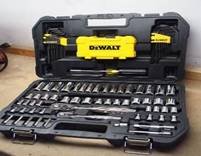
A socket set is arguably the tool you'll need most in order to work on your car. A proper mechanics tool set will include standard and metric sizes and 3/8inch, 1/4-inch, and even 1/2-inch drivers and sockets. Extensions and thin walled sockets are also useful for certain situations. ThisDeWalt socket set is fullfeatured and a great kit for beginners and grease monkeys.
2. Pliers and Wirecutters
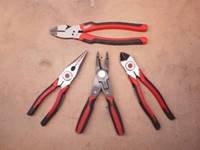
There are a ton of electrical projects you can take on with a vehicle, such as, installing a stereo head unit, speakers, or wiring new headlights. You'll need pliers of various sizes to achieve this, as well as wire cutters and wire strippers. Craftsman and Milwaukee Tool offer a full-range of hand tools to get the job done.
3. Torque Wrench
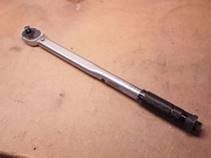
Setting nuts to the proper torque is often over-looked by beginner mechanics. Over torquing a nut can cause the bolt to shear off and also makes it much more difficult to remove when needed. Use a clicker-type torque wrench to ensure you are tightening to the proper specifications. To adjust the torque simply turn the bottom handle and align the top of it to the specified torque which is imprinted on the tool. Tighten until you hear two-clicks and then you're done.
Never use a torque wrench to remove lug nuts, instead use an impact wrench or breaker bar –you risk screwing up the settings on your torque wrench otherwise.
4. Wrenches
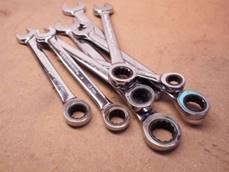
A wrench set is an invaluable addition to any mechanical tool box. We like this ratcheting wrench set from Craftsman, which features an open-ended side and a ratcheting box end so there's no need to remove the wrench on each turn.
5. Screwdrivers
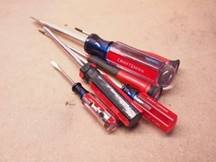
A screwdriver set is as useful around the house as it is in your garage, but you may need to expand out what you already have. Get a complete set that includes a larger flathead which can double as a small prying tool, and the very small screwdrivers delicate enough for electronic work.
6. Dead Blow Mallet
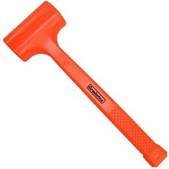
A dead blow mallet is many times the only solution when it comes to removing stuck bolts. A few smacks with this hammer and maybe a little heat will loosen almost anything. This mallet is covered in molded poly to prevent marring metal surfaces.
7. Work Light
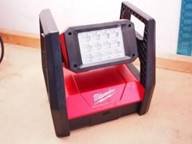
Working into the night is common during the winter, and you need a good work light to prevent losing parts and to spotlight your project. This LED flood light from Milwaukee Tool runs off their M18 battery and can be rotated 240 degrees.
8. Latex Gloves
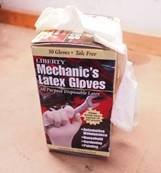
Latex gloves are preferable to regular work gloves as they are disposable and you are working with clean gloves every time you start a project. Reusable work gloves get greasy and grimy real fast and there's no easy way to clean them.
9. Zip Ties

Zip ties are great for bundling cables and wires together and away from hot and moving parts. They also keep everything nice and tidy which makes it easier to work on a vehicle, as opposed to staring into a rat's nest. Buy a bundle of zip/nylon ties of various sizes so you've got plenty of options when needed.
10. Multimeter
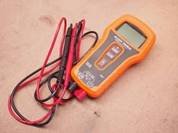
A multimeter is necessary to check whether you've got a hot wire, as well as how much juice is running through it. It removes the guessing game and is vital for tracking down those gremlins that seem to infiltrate the electronic systems of many cars. This Klein digital multimeter is easy to use and has a nice large display.
11.Impact Wrench
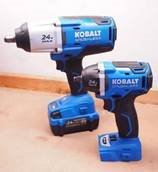
An impact wrench can make quick work of removing lug nuts as can drive nuts in an instant. Just be cautious above overdriving nuts. Kobalt has a new line of brushless impact wrenches available in both 1/2-inch and 3/8-inch sizes. These are competitively priced and will save you a ton of time.
12. Lubricants and Cleaners

Mechanical moving parts need to be cleaned and lubricated regularly, so you'll need to acquire a few liquid sprays to help with this process. A rust penetrant can unstick stubborn bolts and prevent rust from accumulating; brake cleaner dries quickly and can be used to clean any metal parts including brakes; silicone lubricant eliminates squeaking and friction and won't attract dirt; and citrus degreaser is sprayed on and then washed off to remove oil based products from skid plates, axles, and steering components.
13. Drip Pan
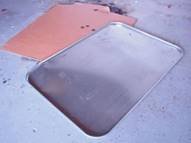
Use a drip pan, or at the very least a piece of cardboard to catch oil and fluids falling from your car. This will prevent stains on your garage floor and make it less likely you'll step in something that gets tracked into your home. (If you really want avoid stains, you can also put large piece of plastic tarp down on you garage floow and drive your car over it.)
14. Desiccant

Keep a bag of desiccant or kitty litter handy to absorb any oil or fluids that may have missed your drip pan and spilled onto your floor. The faster you react, the less likely you'll have an unsightly oil stain on your nice cement floors.
15. Duct Tape & Electrical Tape
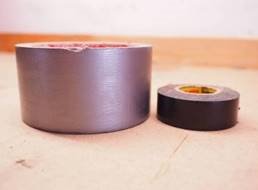
Duct tape has a million uses, so it's common knowledge to keep a roll with you at all times. Electrical tape is also useful when connecting wires and covering up any bare and exposed wiring.
16. Factory Service Manual
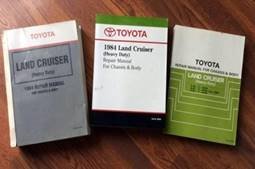
The most valuable tool when working on your vehicle can be a factory service manual. All of the exact specifications for your make and model vehicle are included in this manual, and many times there are tutorials for common jobs like changing brake pads and adjusting a carburetor. These manuals are far superior to the Chilton and Haynes manuals that you'll find at your local auto shop, and sometimes Google and forums don't always have the right answer. If you can't immediately find one locally, check eBay or hunt around the Internet – a surprising number of factory service manuals have been scanned in as .pdfs.
III. Reading comprehension
1. Are the statements true or false? Correct the false ones 1. You'll find working on your own car saves time and money.
2. An auto mechanic's tool set doesn’t differ from woodworking and general DIY tool.
3. A socket set isn’t arguably the tool you'll need most in order to work on your car.
4. You'll need pliers of various sizes to achieve this, as well as wire cutters and wire strippers.
5. Setting nuts to the proper torque is often over-looked by mechanics.
6. A screwdriver set is as useful around the house as it is in your garage.
7. Latex gloves aren’t preferable to regular work gloves as they are disposable and you are working with clean gloves every time you start a project.
8. Zip ties are great for bundling cables and wires together.
2. Complete the sentences
1. A multimeter is necessary to check whether you've got a hot wire, …… .
2. Kobalt has a new line of brushless impact wrenches available in both . ….. .
3. Mechanical moving parts need to be cleaned and lubricated regularly, ….. .
4. Brake cleaner dries quickly and can be used to ………… .
5. Use a drip pan, or at the very least a piece of cardboard to catch oil and …….
6. The faster you react, ………. .
7. Duct tape has a million uses, so ……….. .
8. If you can't immediately find one locally, …….. .
3. Translate the sentences
1. Чи ви ремонтуєте свій старий джип або у вас є новий Пріус, ви можете відмовитися від деяких послуг дилера або автомайстерні і почати робити своє власне технічне обслуговування автомобіля .
2. Правильний набір інструментів механіка включатиме в себе стандартні й метричні розміри і 3/8 дюйма, 1/4 дюйма, і навіть 1/2-дюймових інструментів для загвинчування та зміни голівок.
3. Існує тонна електричних схем, які можна використати для автомобіля, наприклад, установка стереосистеми, колонок або підключити нові фари.
4. Використовуйте динамометричний ключ вирубного типу, щоб переконатися, що ви технічно правильно закручуєте.
5. Набір ключів є безцінним доповненням до будь-якої механічної коробки інструментів.
6. Набір викруток, корисний як для вашого будинку, так і у вашому гаражі, але вам, можливо, доведеться розширити, те, що у вас вже є.
7. Гумова киянка у багатьох випадках є єдиним рішенням, коли справа доходить до видалення застряглих болтів.
8. Найбільш цінним інструментом при роботі з вашим автомобілем може бути заводська інструкція з ремонту.
Text 4. Automobile Maintenance
I. Before you start
What do you know about auto maintenance
Vocabulary
fluid – рідина reliability – надійність drivability керованість longevity довговічність
preventive maintenance – профілактичне обслуговування scheduling – планування stop-and-go режим «стоп-старт»
long-distance cruising – поїздки на велику відстнь towing a trailer – буксирування причепа advisor – консультант
fuel filters – паливний фільтр windshield washer fluid склоочіщуюча рідина tire balancing – балансування шин tire rotation – перестановка шин
wheel alignment регулювання коліс; регулювання кутів установки передніх коліс; регулювання настановних кутів керованих коліс; установка коліс автомобіля; регулювання установки коліс; регулювання кутів установки коліс brake pad – гальмівна колодка to flush – наповнювати, прокачувати
power steering fluid рідина для механізму посиленого рульового управління; робоча рідина гідропідсилювача рульового управління; масло гідропідсилювача; гідропідсилювач timing belt зубчастий ремінь; синхронний ремінь. fatch – зажимний патрон hinge – дверна петля chassis – шассі, ходова частина
rubber boots гумовий чохол (важеля перемикання передач); гумовий
пильовик anti-lock braking system антиблокувальна система fault code – код невиправності еngine control unit блок керування двигуном сoolant level рівень охолоджувальної рідини
tire tread ко лія від шини; протектор шини
wiper blade щітка склоочисника; скребок; щітка (склоочисника вітрового скла) de-icer протиожеледжувач; дефростер; склообігрівач; пристосування для
видалення льоду (з вітрового скла) tune-up регулювання; embedded – вбудованний clogged filter – забитий фільтр; засмічений фільтр to rubber-stamp штампувати
resale value вартість при перепродажі
II. Read the text
Auto maintenance describes the act of inspecting or testing the condition of car subsystems (e.g., engine) and servicing or replacing parts and fluids. Regular maintenance is critical to ensure the safety, reliability, drivability, comfort and longevity of a car. During preventive maintenance, a number of parts are replaced to avoid major damage or for safety reasons, e.g. timing belt replacement.
Scheduling
The actual schedule of car maintenance varies depending on the year, make, and model of a car, its driving conditions and driver behavior. Car makers recommend the so-called extreme or the ideal service schedule based on impact parameters such as: number of trips and distance traveled per trip per day; extreme hot or cold climate conditions; mountainous, dusty or de-iced roads; heavy stopand-go vs. long-distance cruising; towing a trailer or other heavy load.
Experienced service advisors in dealerships and independent shops recommend schedule intervals, which are often in between the ideal or extreme service schedule. They base it on the driving conditions and behavior of the car owner or driver.
Common maintenance
Common car maintenance tasks include: car wash; check/replace the engine oil and replace oil filters; check/replace fuel filters; inspect or replace windshield wipers; check or refill windshield washer fluid; inspect tires for pressure and wear; tire balancing; tire rotation; wheel alignment; check, clean or replace battery terminals and top up battery fluid; inspect or replace brake pads; check or flush brake fluid; check or flush transmission fluid; check or flush power steering fluid; check and flush engine coolant; inspect or replace spark plugs; inspect or replace air filter; inspect or replace timing belt and other belts; lubricate locks, latches, hinges; check all lights; tighten chassis nuts and bolts; check if rubber boots are cracked and need replacement ; test electronics, e.g., anti-lock braking system or ABS; read fault codes from the engine control unit.
Winter Car Maintenance
During winter, a car's maintenance requirements differ due to cold weather. Winter car maintenance tasks include: change your oil; check coolant levels; check your tire tread & pressure; inspect your lights; check the health of your wiper blades; check your battery; stock up on de-icer.
Some tasks that have equivalent service intervals are combined into one single service known as a tune-up. In modern cars, where electronics control most of the car's functions, the traditional tune-up doesn't apply anymore. Maintenance jobs like a tune-up used to mean getting the engine's performance back on track. Today embedded software takes care of it by constantly checking thousands of sensor signals, compensating for worn-out spark plugs, clogged filters, etc. The so-called limp-home function allows driving on limited power when the engine is in trouble. In the old days this might have meant a breakdown. In some countries, the completed services are recorded in a service book which is rubber-stamped by the service center upon completion of each service. A complete service history usually adds to the resale value of a vehicle.
Text 5. 12 Cars Maintenance Mistakes
I. Before you start
What car maintenance mistakes do you know?
Vocabulary preventative – профілактичний
maintenance schedule – графік технічного обслуговування; графік планово-
профілактичного ремонту cost implications – непередбачувані витрати owners manuals – керівництво по експлуатації
to prioritize – надавати перевагу
schedule your next service appointment – складіть графік вашого наступного
технічного обслуговування сheck engine light – контрольний сигнал двигуна to put off відкладати to breakdown – зламатися
dashboard light світло приладової панелі
tyre pressure – тиск накачування шин; тиск повітря в шині to inflate – наповняти повітрям deceiving – оманливий fuel паливо pothole – вибоїна lbs фунт
mileage пробіг автомобіля (зазвичай в милях);
TPMS (Tyre Pressure Monitoring System)система моніторингу стану шин; система контролю тиску повітря в шинах. to verify – перевірити applicable належний, годний replacement заміна
aforementioned вищезазначений tyre wear знос шини
skipping oil changes пропуск заміни масла to seizes up – заїдати neglecting fluid checks – нехтування перевірки рідини misconception – непорозуміння, неправильне уявлення to top off – дозаправити brake fluid рідина для гідравлічного гальма; гальмівна рідина transmission fluid рідина коробки передач; трансмісійна рідина engine coolantохолоджуюча рідина двигуна; антифриз power steering fluid рідина для механізму посиленого рульового
управління; робоча рідина гідропідсилювача рульового управління; масло гідропідсилювача; гідропідсилювач (використовується в Канаді) leakпротікання; відсутність герметичності engine двигун; to overheat – перегрівати; tow – буксир, евакуатор.
filter – фільтр contaminants забруднення; забруднююча речовина; шкідлива домішка;
забруднювач штучного походження host of issues – масса спірних питань
gas mileage витрата бензину, що характеризується числом миль пробігу
автомобіля, що припадають на один галон витраченого палива; гал / 100 км або миль.
іnspecting the brakes – перевірка гальм squealing noise визжащий звук worn-down brakes – зношені гальма to spare замінити, зробити запас grinding noise – скрегіт
not rotating tyres/neglecting to get a wheel alignment не обертаючися
![]() шини/ нехтування вирівнювання колеса tyre rotation – перестановка шин manufacturer виробник spark plug – свічка запалення fuel injector – паливна форсунка, інжектор check engine light – контрольний сигнал двигуна tremendously – надзвичайно
шини/ нехтування вирівнювання колеса tyre rotation – перестановка шин manufacturer виробник spark plug – свічка запалення fuel injector – паливна форсунка, інжектор check engine light – контрольний сигнал двигуна tremendously – надзвичайно
windshield wiper склоочисник вітрового скла; щітка склоочисника,
двірник to chatter – бовтатися
streaky wipe протирати прошарками
wiper blade щітка склоочисника; скребок; щітка (склоочисника
вітрового скла) precipitation атмосферні опади; випадання ammonia – аміак
II. Read the text
![]() In order to work optimally, vehicles require regular preventative maintenance. While not all maintenance schedules are the same, all vehicles require maintenance to help ensure a long life. However, it isn’t always easy to have preventative maintenance measures performed regularly. Besides the obvious cost implications, we have life obligations that can sometimes prevent us from having time to maintain our vehicles as stated in our owners manuals. To help you prioritize and plan here is a list, in no particular order, of the top 12 car maintenance mistakes a person can make and what you can do to avoid them. Schedule your Next Service Appointment
In order to work optimally, vehicles require regular preventative maintenance. While not all maintenance schedules are the same, all vehicles require maintenance to help ensure a long life. However, it isn’t always easy to have preventative maintenance measures performed regularly. Besides the obvious cost implications, we have life obligations that can sometimes prevent us from having time to maintain our vehicles as stated in our owners manuals. To help you prioritize and plan here is a list, in no particular order, of the top 12 car maintenance mistakes a person can make and what you can do to avoid them. Schedule your Next Service Appointment
Ignoring the Check Engine Light
It can be easy to ignore the check engine light. The light comes on and your car seems to be operating as it normally would and you might figure, “Well, everything seems fine, I’ll take care of it soon.” But other things come up, it gets put off, and one day your car could breakdown. As difficult as it might be to find the time to have your vehicle seen by a mechanic when that dashboard light first comes on, it really is best to have it seen as soon as possible because the longer you wait, the higher the costs could be for repairs. In other words, a little time spent having it fixed right away could save you a lot of money in the long run.
Not Checking your Tyre Pressure
It is a common mistake to forget to check the air pressure in ones tyres because, from the looks of it, the tires are properly inflated. Looks can be deceiving. Even when tyres appear to be properly inflated, they could be low on air. While the tyres may not blow out, low tyre pressure could lead to poor fuel economy so your wallet could still be affected. It is also easy for tyres to lose air pressure – as easy as running over a pothole. The weather outside has a big effect on your tyre pressure. Tyres lose 1 to 2 lbs. of air pressure for every 10° the temperature drops outside. Therefore, it is best to check your tyre pressure regularly because you never know when it might be low. After all, the last thing you want is a flat tyre and/or poor gas mileage.
Ignoring your TPMS Light
If your Tyre Pressure Monitoring System light activates, check your tyre pressure. Your TPMS light serves as a warning system informing you when one or more of your tires is deflated beyond what is considered safe by your vehicle’s manufacturer. If this light comes on while you are driving, pull over somewhere safe, preferably your closest open gas station, and verify whether your tire is losing air. If applicable, add air. Occasionally your TPMS sensor may require replacement. If your TPMS is indicating a loss of air pressure, but when you check your tyre, all is well, consider TMPS sensor replacement. In addition to the aforementioned benefits of checking your tyre pressure, balanced tyres promote even tire wear, resulting in a longer tyre life and better fuel economy. If you believe your TPMS light is faulty, your local Pep Boys offers a Free Tyre Pressure Monitoring System Check-up.
Skipping Oil Changes
Motor oil and car engine technology has advanced so much over the years that, depending on the recommendations of your vehicle’s manufacturers, it may no longer be necessary to get an oil change every 3,000 miles – the average oil change interval is around 7,800 miles for today’s cars. This is great news because it means less time and money spent taking your vehicle for an oil change. However, this does not mean that oil changes can be skipped. Your vehicle’s engine needs motor oil to operate properly and without it, the engine seizes up and dies. In order for motor oil to keep your engine running, it can’t be too old. Case in point: if motor oil is left in an engine for too long, the oil begins to break down, which can lead to nasty deposits of sludge in your engine. Instead of lubricating and cooling the engine parts, the oil sludge can damage the parts, which is something you want to avoid at all costs. Getting regular oil changes will help to ensure a long engine life.
Neglecting Fluid Checks It’s a common misconception that motor oil is the only fluid in the car that needs to be checked and changed. It’s true that motor oil is one of the more critical fluids in your vehicle but there are many other fluids in the car that should be checked, exchanged, and/or topped off. Brake fluid, transmission fluid, engine coolant, and power steering fluid should all be checked and serviced as recommended by your vehicle’s manufacturer. Doing this helps to avoid leaks and keep your vehicle operating properly.
Still Driving when the Engine is Overheating
Even automotive experts have admitted to being guilty of this. They also say that this is not the wisest thing to do. An engine, by nature, gets extremely hot when it runs, requiring a cooling system to avoid overheating. When that system fails (and it can happen to anyone), the vehicle needs to be stopped immediately. In this situation, the best idea is to turn the car off and call for a tow.
Not Using Filters as Recommended
Filters need to be as clean as possible in order to work optimally. Clean filters keep dirt particles and other contaminants from entering your vehicle’s fuel, engine or air conditioning systems. Dirty air filters can lead to a host of issues ranging from causing poor gas mileage to making your engine seize or wearing out system components. Have your filters changed as recommended by your vehicle’s manufacturer, and you’ll be glad you did.
Not Inspecting the Brakes
It’s easy to ignore that squealing noise that comes from worn-down brakes. It is easy to convince yourself that the noise is coming from another car or that there is time to spare before you check. The truth is that the brakes are one of the most important components of your car. If they are worn down or not working properly, your vehicle becomes unsafe for you and your passengers. So if you hear a squealing or grinding noise when you brake, have your brake system evaluated as soon as possible.
Not Rotating Tyres/Neglecting to get A Wheel Alignment
This can be a simple thing to overlook because you can drive for quite a while without getting an alignment or rotating your tyres. Although it might seem like everything is fine, having misaligned wheels can result in real issues. There is only one way to be positive that your tyres are properly aligned and that is to have your vehicle's alignment checked. If a wheel alignment is recommended, it is in your best interest to have it performed. As for tyre rotation, most manufacturers recommend that tires be rotated every 5,000 to 10,000 miles but check your owner’s manual to make sure.
Servicing your Own Vehicle without the Proper Know-How
The cool thing about cars these days is that they’re very computerized. There is a computer that monitors various sensors inside the car and uses those sensors to regulate things like idle speed, spark plugs, and fuel injectors, to name a few. If something goes wrong, the computer can sense it and will activate your vehicle’s Check Engine light to alert you to the fact that there is an issue. Since your vehicle is computerized (i.e. complicated), it can be tremendously difficult to fix something yourself if you don’t have the proper tools, knowledge, and diagnostic equipment. As much as it might cost to have a professional technician take a look at your car, you can rest assured that your vehicle will get serviced and/or repaired correctly.
Not changing your Windshield Wipers
Windshield wipers degrade over time. They chatter, they tear and, as a result, leave a streaky wipe behind. The trick is changing your wipers as soon as they don’t clear the windshield well. As they age, wiper blades will leave behind streaks, indicating that it is time to change them. Rain, snow, and other precipitation can severely cut down on your ability to see the road and other vehicles clearly so changing your wipers when they wear out is very important.
Take the wiper blade challenge to determine whether it’s time to replace your windshield wipers.
Using Home Glass Cleaner to Clean your Rear Windshield
This is a big no-no. Most home glass cleaners use ammonia as a chief cleaning agent. Over time, ammonia will break down the heating elements in your rear windshield. The thin red lines you see are actually small wires designed to bring heat to your windshield to assist with defrosting. It is much safer to use window cleaner designed for automotive glass.
It’s true – car maintenance can sometimes get in the way of life. However, making sure that your vehicle is properly maintained when it needs to be will help to ensure that you don’t spend precious time stuck on the side of the road when you could be spending it on things you cherish. Being aware of these 12 common car maintenance mistakes will help you in the long run.
III. Reading comprehension
1. Are the statements true or false? Correct the false ones.
1. While not all maintenance schedules are the same, all vehicles require maintenance to help ensure a long life.
2. It can be difficult to ignore the check engine light.
3. Even when tyres appear to be properly inflated, they could be high on air.
4. Your TPMS light serves as a warning system informing you when one or more of your tyres is deflated beyond what is considered safe by your vehicle’s manufacturer.
5. Your vehicle’s engine needs motor oil to operate properly and without it, the engine seizes up and dies.
6. It’s a common misconception that motor oil isn’t the only fluid in the car that needs to be checked and changed.
7. An engine, by nature, gets extremely hot when it runs, requiring a cooling system to avoid overheating.
8. The truth is that the brakes are one of the most unimportant components of your car.
2. Complete the sentences
1. While the tyres may not blow out, low tire pressure …….. .
2. If this light comes on while you are driving, pull over somewhere safe, ……
3. As for tyre rotation, most manufacturers recommend that tires be rotated …...
4. There is a computer that monitors various sensors inside the car and ……. .
5. Rain, snow, and other precipitation can severely cut down on your ability to see the road and other vehicles clearly so changing your wipers ……. .
6. It’s true that motor oil is one of the more critical fluids in your vehicle but there are many other fluids in the car ……. .
7. Case in point: if motor oil is left in an engine for too long, ……… .
8. However, making sure that your vehicle is properly maintained when it needs to be will help to ensure that ……. .
3. Translate the sentences.
1. Для того щоб працювати оптимально, транспортні засоби вимагають регулярного профілактичного обслуговування
2. Погода зовні дуже впливає на тиск в шинах.
3. Якщо вмикається світло у систеіа контролю тиску в шинах світло, перевірте тиск в шинах.
4. Для того щоб забезпечити роботу вашого двигуна, моторне масло не може бути занадто старим.
5. Гальмівну рідину, трансмісійну рідину, охолоджуючу рідину двигуна і робочу рідини гідропідсилювача рульового управління все потрібно перевіряти як рекомендує виробник вашого автомобіля.
6. Фільтри повинні бути як можна більш чистішими, для того, щоб працювати оптимально.
7. Якщо ви чуєте вереск або скрегіт при гальмуванні, як можна швидше перевірте свою гальмівну систему.
8. Існує комп'ютер, який контролює різні датчики всередині автомобіля і використовує ці датчики, щоб регулювати такі речі, як швидкість холостого ходу, свічки запалювання та паливні форсунки.
4. Discussion. In groups make a list of car maintenance mistakes and what will they cause
PART II. THE ROLE OF AN AUTOMOBILE IN OUR LIFE
Text 1. Automobile History
I. Before you start
When did the first car appear?
Vocabulary wind-driven cars вітрові автомобілі windmill-type drive вітряк типу приводу gear передача
tiller steering румпельне управління rear wheels задні колеса credit довіра, пошана petrol engine бензиновий двигун
rpm хв
V-Twin engine двигун sparking plug свічка запалювання cylinder балон
mount монтувати, кріпити to pave прокласти
assembly-line style конвеєрний стиль four-stroke engine чотиритактний двигун
II. Read text
The History of the automobile actually began about 4,000 years ago when the first wheel was used for transportation in India. Several Italians recorded designs for wind-driven cars. The first was Guido da Vigevano in 1335. It was a windmilltype drive to gears and thus to wheels. Vaturio designed a similar car that was also never built. Later Leonardo da Vinci designed clockwork-driven tricycle with tiller steering and a differential mechanism between the rear wheels.
There are many different types of automobiles - steam, electric, and gasoline - as well as countless styles. Exactly who invented the automobile is a matter of opinion. If we had to give credit to one inventor, it would probably be Karl Benz from Germany. Many suggest that he created the first true automobile in 1885/1886.
Carl Benz and Gotttlieb Daimler, both Germans, the transport habits of the world, for their efforts laid the foundation of the great motor industry as we know it today. First, Carl Benz invented the petrol engine in 1885 and a year later Daimler made a car driven by motor of his own design and the rest is History.
Daimler's engine proved to be a great success mainly because of its less weight that could deliver 1000 rpm and needed only very small and light vehicles to carry them.
France too had joined the motoring scenario by 1890 when two Frenchmen Panhard and Levassor began producing automobiles powered by Daimler engine, and Daimler himself, possessed by the automobile spirit, went on adding new features to his engine. He built the first V-Twin engine with a glowing platinum tube to explode the cylinder gas-the very earliest form of sparking plug. The engines were positioned under the seat in most of the Daimler as well as Benz cars. However, the French duo of Panhard and Levassor made a revolutionary contribution when they mounted the engine in the front of the car under a 'bonnet'.
Charles Duryea built a car carriage in America with petrol engine in 1892, followed by Elwood Haynes in 1894, thus paving the way for motor cars in that country.
For many years after the introduction of automobile s, three kinds of power sources were in common use: steam engines, gasoline or petrol engines, and electrical motors. In 1900, over 2,300 automobile s were registered in New York, Boston, Massachusetts, and Chicago. Of these, 1,170 were steam car s, 800 were electric car s, and only 400 were gasoline cars.
In ten years from the invention of the petrol engine, the motor car had evolved itself into amazing designs and shapes. By 1898, there were 50 automobile manufacturing companies in the United States, a number that rose to 241 by 1908. In that year, Henry Ford revolutionized the manufacture of automobile s with his assembly-line style of production and brought out the Model T, a car that was inexpensive, versatile, and easy to maintain. The introduction of the Model T transformed the automobile from a plaything of the rich to an item that even people of modest income could afford; by the late 1920s the car was commonplace in modern industrial nations.
Below is a table of some automobile firsts, compiled from information in Leonard Bruno's book Science and Technology Firsts (Detroit, c1997) and About.com's History of the Automobile.
|
AUTOMOBILE FIRSTS |
|
||
|
Inventor |
Date |
Type/Description |
Country |
|
Nicolas-Joseph Cugnot (17251804) |
1769 |
STEAM / Built the first self propelled road vehicle (military tractor) for the French army: three wheeled, 2.5 mph. |
France |
|
Robert Anderson |
1832-1839 |
ELECTRIC / Electric carriage. |
Scotland |
|
Karl Friedrich Benz (1844-1929) |
1885/86 |
GASOLINE / First true automobile. Gasoline automobile powered by an internal combustion engine: three wheeled, Four cycle, engine and chassis form a single unit. |
Germany Patent DRP No. 37435 |
|
Gottlieb Wilhelm Daimler (18341900) and Wilhelm Maybach (18461929) |
1886 |
GASOLINE / First four wheeled, four-stroke engine- known as the "Cannstatt- Daimler." |
Germany |
|
George Baldwin Selden (1846- 1922) |
1876/95 |
GASOLINE / Combined internal combustion engine with a carriage: patent no: 549,160 (1895). Never manufactured -- Selden collected royalties. |
United States |
|
Charles Edgar Duryea (18621938) and his brother Frank (1870-1967) |
1893 |
GASOLINE / First successful gas powered car: 4hp, twostroke motor. The Duryea brothers set up first American car manufacturing company. |
|
III. Reading comprehension 1. Make your own questions to the text 2. Put down the date
1.Several Italians recorded designs for wind-driven cars. The first was Guido da Vigevano in_________.
2. First, Carl Benz invented the petrol engine in ________ and a year later Daimler made a car driven by motor of his own design and the rest is History.
3. Charles Duryea built a car carriage in America with petrol engine in___________, followed by Elwood Haynes in__________, thus paving the way for motor cars in that country.
4. In_______, over 2,300 automobile s were registered in New York, Boston, Massachusetts, and Chicago.
5. In_________ Henry Ford revolutionized the manufacture of automobile s with his assembly-line style of production and brought out the Model T.
6. By the late __________ the car was commonplace in modern industrial nations.
3. Translate the sentences
1. Історія автомобіля насправді почалося близько 4000 років тому, коли було використано перше колесо для перевезеннь в Індії.
2. Леонардо да Вінчі створив зведений приводом триколісний велосипед з рукояткою управління та диференціальним механізмом між задніми колесами.
3. Карл Бенц і Готліб Даймлер, обидва німці, заклали основу великої автомобільної індустрії відомої на весь світ.
4.Спершу, Карл Бенц винайшов бензиновий двигун в 1885 році,а через рік Готліб Даймлер збудував автомобіль, який управлявся мотором власної розробки.
5. Генрі Форд зробив революцію у виробництві автомобілів за допомогою конвеєрного стиля, та збудував модель Т: автомобіль, який був недорогий, універсальний і простий у обслуговуванні.
Text 2. Automobile Types
I. Before you start
What car types do you know?
Vocabulary sedan седан luxuryшикарний
enclosed trunkзакритий багажник
rear doors задні двері
subcompact sedans малометражні седани
coupe – купе hatchback хетчбек hence отже removable пересувний station wagons універсал sport utility vehicle позашляховик сonvertible – кабріолет
II. Read the text
Door Sedans
Sedans are known as luxury vehicles and make a good choice for most automobile shoppers. The elegant style has an enclosed trunk, which offers security, while the rear doors allow easy entry for rear-seat passengers. Most luxury vehicles are four-door sedans, because they are more comfortable than most other body styles. The smallest sedans available in the market are sub-compact sedans like Hyundai Accent and Chevrolet Metro. Compact models like Honda Civic and Ford Focus are slightly larger.
Door Coupes
Coupes are usually driven by single adults or childless couples. Most of them have a hatchback instead of a trunk, to allow large items to be carried for short distances. The rear seats are difficult to access and hence, the front doors have to be used. Door coupes have been classified into three parts, namely, club coupe, business coupe and opera coupe. Club coupe has a larger rear seat like those of sedans. Business coupes do not have rear or removable rear seat. They are usually used for carrying wares alongside. Opera coupe is a royal sedan with a high roof and a removable rear seat.
Station Wagons
A family that spends most of the time traveling will consider looking at minivans, sport utility vehicles (SUVs) or station wagons. Station wagons are considered as the first choice for active families. In North America, first minivans and then SUVs grabbed most of the station wagons’ customer base. Nonetheless, station wagons offer more stability, better gas mileage, lower insurance rates and even SUV-sized interiors.
Convertibles
Convertibles are two seater cars, with high-performance engines and superior handling. However, companies like GM, Ford, Mitsubishi and Chrysler offer a few "normal" convertibles, i.e., regular production coupes with four seats and convertible tops as well, such as the Chevrolet Cavalier, Pontiac Sunfire, Ford Mustang, Dodge Avenger, Chrysler Conquest and Mitsubishi Eclipse Spyder. Luxury convertibles are offered by BMW, Mercedes-Benz, Saab and Volvo.
Sports Cars
Sports cars were originally European two-seat roadsters, designed for both daily travel and weekend racing hobbyists. The term sports-sedan is a more recent term to describe a four-door vehicle that is handled like a sports coupe or roadster. Sports cars are cool and fun to drive, though not affordable for daily transportation.
III. Reading comprehension
1.Are the statements true or false
1. Most luxury vehicles are two-door sedans, because they are more comfortable than most other body styles.
2. The smallest sedans available in the market are sub-compact sedans.
3. Most of coupes have a hatchback instead of a trunk, to allow large items to be carried for short distances.
4. A family that spends most of the time traveling will consider looking at minivans, sport utility vehicles (SUVs) or station wagons.
5. Convertibles are four seater cars, with high-performance engines and superior handling.
6. The term sports-sedan is a more recent term to describe a four-door vehicle that is handled like a sports coupe or roadster.
2. Compare any two kinds of the cars.
3. Translate the sentences
1.Седани відомі як розкішні автомобілі та є вибором більшості автомобільних покупців.
2. Купе бізнес классу не мають заднього або змінного заднього сидіння.
3. Сім’я, яка проводить багато часу в поїздках зупинить свій вибір на мікроавтобусах, позашляховиках або універсалах.
4. Кабріолет це дво- місний автомобіль, з високоефективним двигуном і чудовим керуванням.
5. Спортивними автомобілями дуже круто та цікаво керувати , хоча вони не по кишені для щоденного пересування.
Text 3. Main Factors in Choosing a New Car
I. Before you start
Can you name the main factors in choosing a new car?
Vocabulary
BST (British Summer Time) – среднегрінвічивський час + 1 година slick блискучий
supple leather seats – м'які кожані сидіння gorgeous – розкішний, чудовий down-to-earth approach – простий підхід running costs – експлуатаційні витрати fuel efficiency – ефективність використання палива resale value ліквідаційна вартість handling – обслуговування
DAB radio DAB-радіо, цифровий DAB-сумісний радіоприймач satnav – навігатор
discerning – проникливий; вміючий розрізняти
overall cost – загальна вартість
poll – опитування haggling – торгуючись
personal loans – персональний кредит, кредит фізичної особи to negotiate – домовлятися, вести переговори
II. Read the text
Motorists rank their top factors in choosing a new car.
Many drivers are more concerned with getting a reliable car than a good price, according to a new survey by Hitachi Personal Finance and Honest John Reliability is key when choosing a new car.
1:10PM BST 01 Oct 2014
When we fantasise about buying a slick new car, many of us imagine luxury brands, high-power engines, supple leather seats and gorgeous aesthetics. But when it comes to actually making the purchase, the factors we value are much more practical.
Together with Honest John, Hitachi Personal Finance conducted a survey asking motorists to rank their priorities for buying a new car. The results suggest that buyers take a down-to-earth approach to car selection.
Their top priorities are reliability, price, running costs, fuel efficiency and safety. Traditional favourites, such as style and appearance, and manufacturer brand, ranked only sixth and 10th, respectively. In-car technology and internet connectivity came bottom.
The top factors were:
1. Reliability
2. Price
3. Running costs
4. Fuel efficiency
5. Safety rating and features
6. Style and appearance
7. Location and customer service of dealer network
8. Resale value
9. Performance, acceleration, top speed and handling
10. Marque/brand
11. Finance offer
12. In-car technology, DAB radio and satnav
13. In-car internet and phone connectivity
“It seems that UK motorists are become more discerning in the way they buy their cars,” says Gerald Grimes, managing director of Hitachi Personal Finance. “Clearly, the overall cost of running and financing a car is top of buyers’ minds.”
The survey also asked drivers what sources they trust most when researching a new car. The motoring press topped the poll, followed by friends and family, with social media last.
Motorists arrive at a dealership with a clear idea of the vehicle they want to buy, with 90 per cent using the internet for information. Car buyers are also more likely to arrange finance for a used vehicle before haggling with a dealer, to try to secure a larger discount.
Mr Grimes says: “We’ve seen a significant increase in demand for personal loans as more people realise that arranging your own finance in advance puts you in a stronger position to negotiate the best deal you can.”
Hitachi Personal Finance loans are available from £2,500 to £25,000 over terms of two to five years, with no early repayment charges.
*The survey, conducted online with 782 readers of the Honest John website, was completed in June 2014.
Hitachi Personal Finance provides some of the most competitive personal loans in the market.
III. Reading comprehension 1. Are the statements true or false? Correct the false ones
1. Many drivers are more concerned with getting a reliable car than a good price
2. When we fantasise about buying a slick new car, many of us imagine famous brands.
3. The results suggest that buyers take a difficult approach to car selection.
4. Their bottom priorities are reliability, price, running costs, fuel efficiency and safety.
5. In-car technology and internet connectivity came top.
2. Complete the sentences 1. When it comes to actually making the purchase, the … .
2. Traditional favourites, such as style and appearance, and manufacturer brand, ranked …. 3. The top factors were…. .
4. Motorists arrive at a dealership with a clear idea of the vehicle they want to buy, …. .
5. Mr Grimes says: “We’ve seen a significant increase in demand for personal loans as more people …”.
3. Translate the sentences
1. Коли ми мріємо про купівлю нових автомобілів, багато з нас уявляє собі розкішні бренди, потужні двигунів, м'які шкіряні сидіння та чудову естетику.
2. Результати припускають, що покупці обируть простий підхід до вибору автомобіля.
3. Традиційні переваги, такі як стиль і зовнішній вигляд, і виробник бренду, зайняли тільки шосте і десяте місця відповідно.
4. Покупці автомобілів також ймовірно організувують фінансування для уживаного автомобіля перш ніж торгуватися з дилером, щоб спробувати забезпечити собі велику знижку.
5. Автомобілісти прибувають до дилерського центру з чіткою ідеєю який автомобіль вони хочуть купити, та 90 відсотків використовують Інтернет для отримання інформації.
4. Rank the top factors in choosing a car.
Text 4. Car Marketing
I. Before you start
Have you/your parents ever sold a car?
Vocabulary franchised dealers – дилерські центр з рознічною торгівлею легковими
авто forecourt – переднє подвір'я, заправочний майданчик, АЗС to offset a discount – компенсувати знижку valuation – оцінка, визначення вартості to make a margin – заробити mileage – кілометраж niche appeal – ніша звернення lucrative – прибутковий, вигідний private classified ads – приватні оголошення bet – ставка MOT = motor
cambelt – ремінь газорозподільного механізму (ГРМ) to wary of crooks – насторожливо ставитися до шахраїв entry fee – вступний внесок hassle-free – простота у використанні
tyre-kickers – любителі авто (має дещо зневажливий відтінок) enterprise – підприємство, компанія
2. Read the text
By Adrian Porter
Our top tips on getting the best price for your car. Plus we explain part exchange, classified ads, auctions and car-buying services.
Part exchanging. If your car is only a few years old, or if you’re buying another vehicle from the same manufacturer, then part exchanging it may be the best and simplest option.
Franchised dealers are usually keen to take on good-quality second-hand cars for their forecourts, but may prefer models from the same brands it sells new. Independent dealers will usually take on almost any good-condition car in part exchange. If you choose to part exchange, you should focus on the ‘price to change’ – this is the difference between the part-exchange offer on your old car and the price of the new one, rather than the individual price of either. A dealer may offset a discount on your new car against a poor valuation on your old one, for example, or offer a very good price on your old one to tempt you into buying the new car at close to list price (the price shown in the brochure). Bear in mind that most dealers will be looking to make a margin on any second-hand car they take
on, so the part-ex price is unlikely to be as high as the price you’d get from selling privately. However, it’s undoubtedly much more convenient.
Online part exchanges. If you’re buying your new car through an online broker or agent, it may offer a part-exchange facility, too. Usually you will be expected to complete a form detailing the car’s condition, mileage and service history, and an offer will be made. This is unlikely to be very generous, as your old car will simply be sent to auction.
Selling to a dealer.
If your car is relatively new, has low-mileage and is a model in high demand second-hand, or if it has particular specialist or niche appeal, then a dealer (franchised or independent) specialising in that marque or type of vehicle may be interested in buying it outright. Well cared-for mainstream vehicles are also valued by small local traders, especially if it’s a car they know they can sell on again quickly. This may be a quick and easy way to sell, if not the most lucrative.
Private classified ads.
Traditional classified ads – now online as well as in newspapers and magazines, of course – remain a popular way to sell used cars. For sports, performance or classic cars, for example, consider advertising in a specialist magazine or on a related website; for a low-value older car, one of the free-ad websites (such as Gumtree) or local free papers may be a better bet. Make sure your advert describes the car accurately and gives all the necessary information: specific model and specification, age, mileage, length of MOT and service history.
Avoid unnecessary waffle, but put in any appealing information, such as ‘only one owner’, ‘recent cambelt change’ or ‘new tyres’, if applicable. Also provide a good selection of decent-quality photographs, including interior shots. Be prepared for people who fail to turn up, time wasters and aggressive hagglers. Make sure that buyers are insured for test driving and have a valid driving licence. Most importantly, be wary of crooks: be careful giving out your personal information online, do not leave people in your car alone with the keys or paperwork, and be mindful of your own personal security and safety at all times.
Selling at auction.
Sending your car to an auction is a more impersonal way to dispose of it, although there are no guarantees of a sale and prices are not generally high. You will need to pay an entry fee and set a reserve price; if it does not reach this price, you will have to take it home or try again in another sale. Although you should receive payment from the auction company promptly, commission will be deducted.
Online car buying services.
There are an increasing number of companies that offer to buy your car (eg We Buy Any Car). You enter your car’s details on the company’s website (such as age and mileage), receive a valuation, and then take it to a local depot to have it assessed. If all is well the money is usually paid straight into your bank account, but admin fees may be payable. This certainly sounds hassle-free, but such companies only offer a price giving margin for profit once they sell the car at auction. Online valuations are only provisional prior to the car’s inspection, and may be substantially reduced once the car has been seen. You’re almost certain to get a better price selling the car, or even sending it straight to auction, yourself. In our undercover research, we found that five out of six of our mystery shoppers would have been better off selling to a dealer – in one case, by over £2,000.
Charity donation.
If you are stuck with a low-value car or you simply can’t face the tyre-kickers, you could donate it to a charity. Many charities, from big household names to small local fund raisers, are signed up to schemes whereby a donated car can be collected and either auctioned (if it's roadworthy), or scrapped and recycled, with the charity receiving the price paid. This is sometimes done in partnership with social enterprises, such as those providing work experience for disadvantaged people. You will be able to declare the donation as Gift Aid, which will increase the money your chosen charity receives. Research the different schemes, however, because some deduct fees for administration and vehicle collection, reducing the money a charity gets.
III. Reading comprehension
1. Put down your own 8 questions to the text.
2. Open the brakets. Use the correct tense.
1. If your car ________only a few years old (be), or if you________ another vehicle from the same manufacturer (buy), then part exchanging it may be the best and simplest option.
2. Independent dealers _________usually ______on almost any good-condition car in part exchange (take).
3. __________in mind that most dealers will be looking to make a margin on any second-hand car they take on (bear).
4. If _____________your new car through an online broker or agent (buy), it may ________a part-exchange facility, too (offer).
5. Make sure that buyers insured for test driving and have a valid driving licence (be).
6. You _________to pay an entry fee and set a reserve price (need); if it this price (not reach), you _______it home or try again in another sale (have to take).
3. Translate the sentences
1. Незалежні дилери зазвичай практично беруть будь-який автомобіль у хорошому стані задля часткового обміну.
2. Зазвичай від вас потребується заповнення форми про стан авто, пробіг та історію обслуговування.
3. Якщо ваш автомобіль новий, має низький пробіг і є зразком високого попиту серед вживаних авто, то дилерські центри (франчайзингові і незалежні), які спеціалізуються в цій марки або типі транспортного засобу можуть бути зацікавлені в його покупці.
4. Переконайтеся, що ваша реклама точно описує машину і дає всю необхідну інформацію: конкретну модель та комплектацію, вік, пробіг, габарити двигуна та історія обслуговування.
5. Додайте якісні знімки авто, що включають інтер'єр та екстер'єр транспортного засобу.
6. Існує велика кількість компаній, які пропонують купити Ваше авто.
4. Make an advertisement of the car to sell it
Text 5. The Most Famous Car Brands
I. Before you start
What car brands do you know?
Vocabulary primer інструкція fancy – фантазія protruding виступаючий to pull off – справитися з задачею to lead the pack – випередити slap – грюкати wreathed crests – плетені гребені radiator caps – кришка радіатору
engine compartment відсік двигуна, моторний відсік focal point – основний акцент
three-dimensional representation – тримірна модель intricate – заплутаний
to be rife with рясніти draughtsman – малювальник
knot – вузол laurel – лавр serpent – змія spiritedly – задерикувато merger – злиття, поєднання
all-wheel-drive system – система повного приводу synchronicity – синхронність panache – франтівство, хизування gravitas – багатозначність rotary engine – роторний двигун roundel – рондо to evoke викликати, пробуджувати, спричиняти leaning – нахил, пристрасть successor наступник, спадкоємець rendition – виконання coat of arms – герб bowtie – кроватка-метелик badging – емблема mated with – пов'язаний з
ubiquitous – всюдисущий\
a permanent fixture – постійне пристосування crucial – вирішальний, ключовий a taffy pull – розтягнення perpetuity – безмежність, нескінченність to pursue – переслідувати infinity – нескінченність sidecar – каляска мотоцикла hexagon – шестикутник multi-layered – батагошаровий agility – спритність, рухливість breeder – виробник to soar – злітати, підніматися a squarish oval – квадратно-овальний gesellschaft – компанія rectangle – прямокутник antlers – оленячі роги quadrants – квадранти sandwiched – затиснутий the Pleiades – плеяда
the Taurus Constellation – сузір'я тельця intact – неушкоджений, цілий
II. Read the text
Not every brand has a fancy, protruding hood ornament, nor can every brand pull one off. Companies like Bentley and Rolls-Royce lead the pack when it comes to sculpted hood candy, while brands like Jaguar and Cadillac no longer slap sleek leaping cats or wreathed crests (respectively) on their cars. The hood ornament started when radiator caps were located on the outside of the car, rather than in the engine compartment. Companies started making the cap the visual focal point, giving rise to iconic hood ornaments like Bentley’s Flying B, Packard’s Winged Woman or Pontiac’s Indian Chief. Hood ornaments can take the form of a threedimensional representation of the brand’s emblem, like Mercedes-Benz’s threepointed star on the 2012 E-Class, or they can be completely separate from the brand emblem, as is the case with the 1978 Ford Thunderbird’s model-specific ornament. Hood ornaments today are viewed as overwrought and detrimental to aerodynamics, to the ornamentalists’ chagrin.
Alfa Romeo
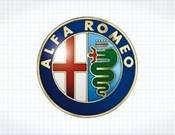
One of the more intricate and dramatic automotive emblems, Alfa Romeo‘s is rife with Italian tradition. The original was created by Romano Catteneo, an Italian draughtsman, and the emblem employs Milanese elements, including the Biscione (shown on the right side of the emblem), which signifies the house of Visconti, Milanese rulers in the 14th century. The left side shows a Milanese red cross on a white background. In 1918, the badge was changed to include a dark blue surround ring with the words “Alfa-Romeo Milano”, along with two Savoy dynasty knots for the kingdom of Italy. In 1925, it underwent further change to include laurels that signify the Alfa P2’s win at the Automobile World Championship, and in 1945 when Italy’s monarchy ended, the Savoy knots were removed. Though at first glance it appears that the crowned serpent is shooting red flames out of its mouth, it’s actually a man being swallowed. This part of the symbol has been very controversial, seemingly symbolizing the Crusades, wherein the Christians defeated the Moors. Suffice it to say the folks at Alfa Romeo don’t much talk about that part.
Aston Martin
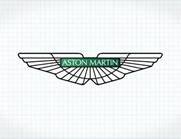
Carmakers love wings, and Aston Martin is no exception. The British carmaker was founded in 1913 by two gents, Lionel Martin and Robert Bamford. While they were selling Singer cars out of their Bamford & Martin shop, they came up with the idea to produce their own vehicles. Some years later, the name transitioned from Bamford & Martin to Aston Martin Motors, born from Martin’s name and the Aston Clinton Hillclimb in Buckinghamshire, where Martin would drive from time to time, no doubt spiritedly. The logo itself denotes speed (hence the wings), but it has evolved over the decades from simple superimposed A and M letters within a circle to, in 1927, a V-shaped winged logo and then, in 1987, to what is essentially the modern version. The emblem today employs straight wings and the Aston Martin name front and center, and it’s one of the more elegant brand emblems in existence today.
Audi

Don’t make the mistake of thinking that Audi has anything to do with the Olympic Games. The four silver rings symbolize the merger, in 1932, of the four oldest car manufacturers in Germany: Audi, DKW, Horch and Wanderer. These four companies formed what is known as the Auto Union, and initially only Auto Union-specific cars bore the four-ringed badge, while the individual carmakers used their own logos. In 1985, the Auto Union name disappeared forever and the Audi name (a Latin derivative of founder August Horch’s last name, meaning “to hear”) carried forth the same German auto-making spirit. It also carried forward the iconic emblem that lives on today, largely unchanged. Rumors have floated around claiming that the emblem symbolized four driven wheels from the Quattro all-wheel-drive system, but that claim has no historical merit. Still, Audi occasionally has made reference to the connection, capitalizing on a bit of synchronicity.
Bentley
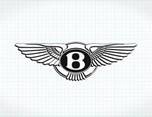
There are few names in the automotive industry that carry as much panache and gravitas as the British manufacturer Bentley Motors. The emblem shows a bold “B” surrounded by a set of spread wings. The hood ornament is similar, with a large capital B and aviary wings that flow backward. The significance of the emblem is the “B” reflecting the Bentley name, after Walter Owen Bentley, who founded the company in 1919. The winged design links to the original company name, Bentley Aero; the company originally manufactured rotary engines for planes during World War I.
BMW
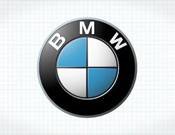
Among Bimmerphiles, the meaning of the BMW Roundel – as it’s officially called (BMW Car Club of America’s magazine title carries the same name) – stirs up a bit of controversy. The latest interpretation (latest being the 1920s) is that the emblem signifies a propeller against a blue sky, representing BMW’s early history of making airplane engines. As attractive as this explanation is, the truth behind the Roundel is far different. When Bayerische Motoren Werke AG (Bavarian Motor Works) was formed out of Rapp Motorenwerke airplane manufacturing in 1928, the emblem reflected the BMW name within a black outer circle, and the blue-andwhite Bavarian flag’s panels were placed within a concentric circle at the center. It’s evolved somewhat over the years, but the changes have been minor – font, font color and the appearance of relief in the Bavarian flag checks at the center.
Bugatti
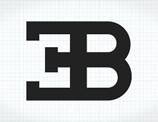
Ettore Bugatti’s initials live on today in his emblem, though an independently held Bugatti company died along with Ettore in 1947. Buggatti was born in Italy, but started his company in 1909 in the Alsace region in France. His cars evoked deep and fluid sculpting, fitting for the Bugatti family’s artistic leanings. A Roundel аfter Ettore died, there would be no successor to carry on his name due to the earlier death of his only son. Fewer than 8,000 Bugattis had been built, but the name would not only stand in the record books, but also be revived by Volkswagen, who have since built some of the most exotic automobiles ever made, like the EB110 and the insane Veyron hypercar.
Cadillac
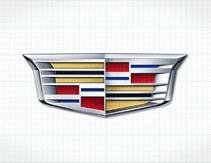
The Cadillac emblem you see today is a modern rendition, yet its initial roots are still easily recognizable. The original emblem represented a family name, belonging to Le Sieur Antoine De La Mothe Cadillac (luckily, the cars weren’t called “La Mothe”). Monsieur Cadillac founded the city of Detroit, Michigan in 1701, and the Cadillac brand bears more than just his name; the emblem bears the resemblance of the Cadillac coat of arms.
Like many other automotive emblems, it has evolved over the years, and its original form was far more complicated than what you see today. The Cadillac coat of arms doesn’t show a shield like the automotive emblem does; rather, it was completely round and displayed trios of merlettes (birds), a symbol of knightly participation in the Crusades, along with a black bar (or “fess”) that also symbolized service in the Crusades and a red band for boldness. In 1905, Cadillac adopted the symbol for its cars, and since then it’s morphed quite noticeably to the modern version that bowed in 2000, largely influenced by the Dutch painter Piet Mondrian. In 2014, the emblem made its most recent change, losing the laurel leaves that encircled the crest and further simplifying the emblem while remaining easily recognizable.
Chevrolet
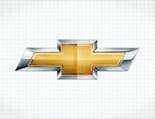
The jury’s still out on the origin of Chevy‘s bowtie. As it’s supposedly remembered by William C. Durant, cofounder of General Motors and Chevrolet, Durant was inspired by a repeating pattern on the wallpaper of his French hotel room. His wife, however, disputes that claim, stating that he was inspired by a newspaper ad for Coalettes that showed the same bowtie outline. There are other claims that Louis Chevrolet designed the bowtie as a modified Swiss cross, in honor of his parents’ homeland. Whichever story you believe, the bowtie stuck. It’s evolved throughout the years, going from a royal blue color phase to the current gold.
Chrysler
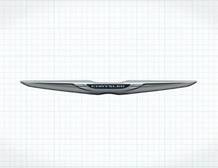
It’s now officially known as Fiat Chrysler Automobiles, but the Chrysler name lives on in the Chrysler logo and badging. Originally based on the Kruessler family crest, the Chrysler seal emblem – mated with flanking wings in the 1930s – was meant to represent quality, hence the royal-style wax seal. In the ’50s, Chrysler employed what’s known as a “Jet Age” style log, with two chevrons superimposed onto one another, but it didn’t last long given its temporary trendiness. In 1962, Chrysler’s longstanding five-triangle “Pentastar” logo was created with the idea that it should be timeless and global. It was a logo that was easily identifiable and became synonymous with the ubiquitous K-Car and LeBaron. Then, in the ’90s, the Chrysler seal and wings returned, but with longer and wider wings. The Pentastar came back shortly thereafter, then disappeared forever from Chrysler cars in 2009, when a thin, wide and elegant winged badge took its place. After all the changes, it now looks like the wings are a permanent fixture in the Chrysler logo.
Ferrari
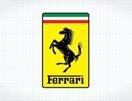
The Cavallino Rampante, or “Prancing Horse” in Italian, is the proud icon of one of the most prolific performance automobile manufacturers in the world, Ferrari. And, in good form, the story of the emblem’s creation is nearly as exotic and storied as the carmaker itself. Enzo Ferrari, the namesake, told a story of his victory at the first Savio circuit, where he met Count and Countess Enrico and Paolina Baracca, parents of an Italian fighter pilot who had flown with a prancing horse emblazoned on his plane. The son had passed, but Enzo was told the symbol would bring him luck (talk about prescience). The horse was adopted and a yellow background was used to represent the town of Modena, the Ferrari factory’s location. But the emblem could not be used for the cars, initially – it was seen only on Ferrari’s publications and papers, since Alfa Romeo technically owned the cars. The shield emblem debuted in July of 1932 at the Spa 24 Hours, and in 1963, Ferrari also began to utilize a relief version of the Prancing Horse, which you still see today.
Ford
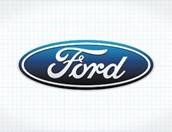
The Ford Motor Company‘s emblem hasn’t gone through too many changes since 1903, as they’ve stuck with the Blue Oval from 1927 to now. The original emblem was busy and bore the entire “Ford Motor Co. Detroit, Mich” wording in an amorphously shaped black-and-white background. The script, which has stood the test of time, was penned by Ford Chief Engineer Childe Harold Wills in 1909. The Blue Oval was added nearly two decades later, making the badge what it is today.
Honda
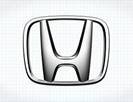
Though there’s nothing particularly original or mysterious about the basic but attractive silver Honda “H” emblem, what the symbol represents is crucial to understanding Honda. The company is named after Soichiro Honda, the company’s founder – a mechanic, tuner and racer who eventually turned Honda into the largest builder of motorcycles in Japan and the second-largest Japanese automaker. Honda’s consumer engines are direct derivations of the versions built for racing, and their quality and reliability are as solid as the stance of their simple but prominent logo.
Hyundai
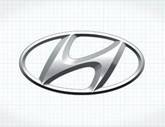
At first glance, you wouldn’t give much credit to Hyundai for their emblem. But the South Korean company created it to be more than just a Honda logo that underwent a taffy pull. The Hyundai “H” represents the name, but it’s encased in an oval to reflect the perpetuity that Hyundai pursues internationally. The “H” itself is designed to symbolize two people shaking hands (how friendly!). And we know that based on Hyundai’s affordable yet quality automobiles, the symbol does not signify a customer handing over his wallet to the salesman.
Infiniti
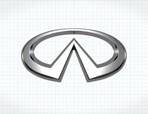
One of the more original but simple modern automotive symbols out there,
Nissan’s luxury brand utilizes a partial oval surrounding a road that narrows into the distance, or to…infinity. It’s a tasteful badge and, thankfully, it conveys an actual connected meaning between the brand name and the logo. The logo is similar to Oldsmobile’s logo, which also shows a road driving off into the distance (but Oldsmobile’s road veers to the right). Infiniti has to be around a bit longer before they can lay claim to any iconic cars, but they are well on their way to making some very dramatic statements.
Jaguar
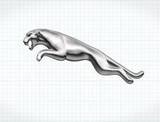
The Jaguar emblem began with a nod to the Swallow Sidecar Company, who produced the SS Jaguar in 1935. The emblem featured the characters “SS” in a hexagon on top of an eagle’s wings and tail. The leaping cat emerged in 1945 and hasn’t changed much since then. There’s nothing mysterious or multi-layered about its meaning. The use of the Jaguar cat is meant to convey power and agility, and Jaguar has done an incredible job of communicating that ethos to the automotive world, especially with cars like the new F-Type.
Lamborghini
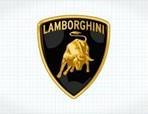
Lamborghini‘s logo traces back to founder Ferruccio Lamborghini’s 1962 visit to Don Eduardo Miura’s ranch, where fighting bulls were bred. So heavily influenced by the power and presence of these animals, Lamborghini adopted the bull as the emblem for his cars. Soon after, he began to use the names of fighting bulls and bullfighting terms for his cars (except for the Miura, which was named after the breeder). Names like Islero, Espada, Urraco, Jalpa, Diablo, Murcielago, Gallardo and Aventador evoke the snorting bull emblem. We’re still trying to figure out the Countach, however.
Lexus
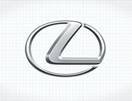
We’d love to elaborate on the meaning of the Lexus emblem, but due to the company’s somewhat limited history (Toyota’s luxury brand made its introduction to the world in 1989) and the simplicity of the emblem, there’s really not much to tell. There was initially some speculation behind the Lexus name, claiming that it stood for “Luxury Exports to the US”, but the truth is that Lexus is derived from the name Alexis, which was the originally planned name. It eventually morphed into “A Lexus” and then just plain “Lexus”. The emblem itself is just a stylized
“L” within an oval, nothing more to tell.
Lotus
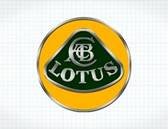
Lotus cars, founded by Anthony Colin Bruce Chapman (British enough for you?), had their start as racing and road cars. Chapman’s initials are found on the Lotus emblem, which has been essentially unchanged since 1952, when Lotus Engineering Ltd. was formed. The Lotus name’s origin is unknown. British Racing Green (BRG) is found in the background, largely due to the color’s popularity during Chapman’s era. The surrounding yellow embodies the sunny perspective that Chapman saw for his future. Lotus cars achieved much fame, especially in Formula 1 racing, but the company struggled in the ’70s and early ’80s, then was rescued by the sale of the famed Lotus Esprit Turbo in the US market. Sadly, Chapman died at the early age of 54; but his company, after changing hands a few times, now produces some of the best-handling cars around, namely the Elise, Exige and Evora.
Maserati
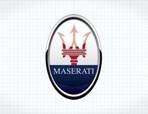
The Maserati Trident logo has remained largely unchanged since it first showed up on the 1926 Tipo 26. The iconic statue of the god of the sea stands in the Piazza Maggiore in Bologna, Italy, where Oficine Maserati was first headquartered. Neptune stands atop a fountain, powerfully wielding his famous trident scepter – and the statue served as inspiration for the emblem along with Bologna’s colors, red and blue.
Mazda
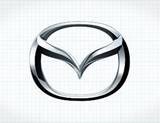
The Mazda logo dates back to 1936, when it presented as a triple-stacked M for “Mazda Motor Manufacturer”. The logo was allegedly inspired by Hiroshima’s own emblem, as it’s company’s hometown, and it was flanked by some very Van Halen-esque wings that symbolized “agility, speed and the ability to soar to new heights”. Then, in 1959, when Mazda began manufacturing passenger vehicles, they introduced a simplified logo with an “M” in the middle of a circle. In 1975, Mazda transitioned to a new brand image and used only the Mazda name as car badging, a blend of uppercase and lower-case letters at the same height. In 1992, the Japanese automaker introduced a brand symbol that was comprised of a circle in the middle of a curved diamond shape and encased in a larger ovular shape that supposedly represented wings, sun and a circle of light. Then, in 1997, Mazda created the logo that’s still used today: an “M” within a squarish oval that also incorporates a “V” shape and an upturned wing style to symbolize the company’s desire to soar into the future. It’s easily their most attractive logo to date.
Mercedes-Benz

Mercedes, a division of Daimler-Motoren-Gesellschaft (DMG), needed a trademark back in the early 1900s. DMG founder Gottlieb Daimler had passed in 1900, and his sons Paul and Adolf used their father as inspiration calling upon the star symbol on Gottlieb’s home that represented future prosperity for his growing company. The symbol was well received by the board at Daimler in June of 1909, and both the now-famous three-pointed star and a four-pointed star were registered as trademarks under the Daimler name. It’s the three-pointed star that survived, representing Daimler’s goal of using their motors to power vehicles on air, land and sea. In 1916, the star was centered within a circle and has undergone only small changes, ending with its current silver star in a silver circle.
Nissan
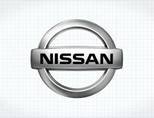
Nissan‘s current logo is a chrome badge with simply “NISSAN” in a silver rectangle centered across a silver circle. Its origins began with the Nissan’s control of DAT Motors, formerly Datsun. The Datsun logo utilized the Datsun name in a blue rectangle over a red circle – Japan’s “Rising Sun” symbol, which appears on the national flag. The existing Nissan logo came about in 2001, utilizing a more modern interpretation of the original emblem, with chrome representing sophistication, modernism, creativity and perfection in Nissan’s products.
Porsche
It would be hard to find a more attractive emblem than the famous gold, black and red Porsche crest. It is easily one of the most enduring emblems in automotive history, barely changing since its introduction in 1952, when Ferdinand Porsche set out to create an iconic emblem. Its most obvious connection is with the city of Stuttgart, where Porsche is headquartered. The city originated on a stud farm, hence the centrality of the horse. The antlers and the redand-black stripes in the surrounding quadrants of the shield represent the Kingdom of Württemberg, a former state of the Federal Republic of Germany (Stuttgart is the capital). The unchanged appearance of the Porsche crest over the past several decades is consistent with the enduring legacy of its most iconic model, the 911, where the crest is displayed at the tip of its legendary flat nose.
Saab
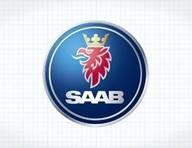
Saab’s heritage dates back to airplane production in the mid 20th century. The company Svenska Aeroplan AB (translated “Swedish Aeroplane Limited”) started producing cars in the 1950s, but the original logo symbolically bore the front of an airplane propeller. Eventually, it changed to a red Griffin with a golden crown sandwiched between the Saab-Scania name. The red Griffin is inspired by a Swedish coat of arms, and is also based on the logo of Vadis-Scania’s, the truck manufacturer that partnered with Saab’s parent company to form Saab-Scania. The most recent emblem, revised when GM took over in 2000, shows only the Saab name.
Subaru
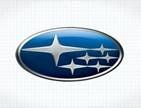
Subaru actually means “The Pleiades” in Japanese, referring to the the star cluster in the Taurus Constellation. The Subaru badge only shows six stars (Electra, Maia, Taygete, Asterope, Celaene and Alcyone) because those are the most prominently visible to the naked eye (depending on location, ambient light, etc.). In 1953, five companies merged as one: Fuji Heavy Industries Ltd. The five small stars represent the merged companies, and the larger sixth star represents the bigger firm.
Toyota
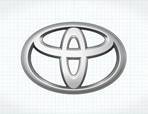
Most interpret the Toyota emblem as an artistic, albeit bloated interpretation of the letter “T”. The emblem, however, actually bears significant meaning. The ovals overlap one another, symbolizing trust between the automaker and its loyal customers. The white space that occupies the emblem signifies Toyota’s future potential. And the three ovals together represent the collective hearts of the customer, the cars and the technological opportunities ahead.
Volkswagen
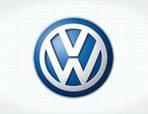
One of the largest automotive manufacturers in the world, Volkswagen, happens to have one of the simplest emblems in the business. Once again, an automaker uses an automotive emblem wrapped up in the ubiquitous circle, this time with a V for “volks” (people, in German) and the W for “wagen” (cars), with the former stacked on the latter. It’s appropriate, of course, for the people to ride on the cars, as opposed to the other way around.
Volvo
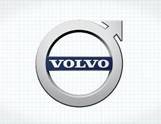
The Volvo name isn’t Swedish, despite the car’s origins. It stems from the Latin word “Volvere”, for “roll”. Volvo means “I roll”, which aptly captures the intentions of a car company. Volvo’s original emblem from 1927 was a blue oval with the Volvo name centered on the logo and Gothenburg, Sweden, the manufacturer’s location, on a banner beneath the name. Then, in 1930, Volvo began using its now-famous iron alchemy/Greek male/Mars, god of war symbol: a circle with an arrow pointing up and to the right. Volvo only recognizes the first association, of course. It’s meant to symbolize strength, protection of its customers, forward thinking and innovation. In 2014, Volvo simplified their already crisp emblem by moving the Volvo name completely inside the circle, as opposed to laying across its width. On their cars and SUVs, Volvo’s emblem is always coupled with an angled crossbar that matches the direction of the arrow, providing an easily recognizable face to their lineup. The fact Volvo hasn’t changed their brand image even after being purchased by Geely of China reassures that their priorities – safety and longevity – remain very much intact.
II. Reading comprehension 1. Are the statements true or false? Correct the false ones
1. One of the more intricate and dramatic automotive emblems, Alfa Romeo‘s is rife with Spanish tradition.
2. The British carmaker was founded in 1913 by two gents, Lionel Martin and
Robert Bamford
3. In 1986, the Auto Union name disappeared forever and the Audi name (a
Latin derivative of founder August Horch’s last name, meaning “to hear”) carried forth the same German auto-making spirit.
4. The significance of the emblem is the “B” reflecting the Bentley name, after Walter Owen Bentley, who founded the company in 1918.
5. Buggatti was born in Germany, but started his company in 1909 in the Alsace region in Italy.
6. It’s now officially known as Fiat Chrysler Automobiles, but the Chrysler name lives on in the Chrysler logo and badging
7. The Cavallino Rampante, or “Prancing Horse” in Italian, is the proud icon of one of the most prolific performance automobile manufacturers in the world, Ferrari.
8. The Ford Motor Company‘s emblem hasn’t gone through too many changes since 1904, as they’ve stuck with the Blue Oval from 1929 to now. The original emblem.
2. Complete the sentences
1. Honda’s consumer engines are direct derivations of the versions built for racing, and …. .
2. The South Korean company created it to be more than just a Honda logo that… .
3. Infiniti has to be around a bit longer before they can lay claim to any iconic cars, but …. .
4. The Jaguar emblem began with a nod to the Swallow Sidecar Company, who
…
5. Chapman’s initials are found on the Lotus emblem, which …. .
6. In 1975, Mazda transitioned to a new brand image and used only the Mazda name as …..
7. Mercedes, a division of Daimler-Motoren-Gesellschaft (DMG), needed a…
.
8. It is easily one of the most enduring emblems in automotive history, barely changing since its introduction in 1952, when Ferdinand Porsche…. .
Translate the sentences
1. Спадщина Сааб бере свій початок від виробництва літаків у середині 20-го століття.
2. Subaru насправді означає "Плеяди" на японській мові, посилаючись на зоряне скупчення в сузір'ї Тельця.
3. У Тойоті овали накладаються один на одний, символізуючи довіру між автовиробником і його постійних клієнтів.
4. Один з найбільших автовиробників у світі, Фольксваген використовує найпростішу емблему у бізнесі.
5. Оригінальною емблемою компанії Вольво з 1927 був синій овал з назвою з логотипом Вольво у центрі та Гетеборг, Швеція, місця знаходження виробника, на банері під назвою.
6. Трикінцева зірка Мерседес-Бенц представляє мету Даймлера, використовувати свої двигуни для транспортних засобів у повітрі, на землі та на воді.
7. Остання інтерпретація логотипу БМВ означає пропелер на тлі блакитного неба, представляючи ранню історію БМВ: створення авіаційних двигунів
8. Логотип «Хюндаи символізує двох людей, які потискають один одному руки.
4. Discussion. What automobile brands aren’t mentioned? Can you give any information about them?
Text 6. Electric Cars
I. Before you start
What do you know about an electric car?
Vocabulary power рушійна сила; посилення, потужність (двигуна),джерело живлення electric motor – електродвигун
gasoline motor – бензиновий двигун, карбюраторний двигун hybrid car – гібрідний автомобіль, легковий автомобіль з гібрідним
приводом to pollute – забруднювати benefit – користь, перевага percentage – процент
a power station – генераторна станція, електростанція
fossil fuels горючі копалини; енергоносії (мінерального походження);
паливно-енергетичні корисні копалини nuclear power stations – атомні електростанції destination – місце призначення, кінцевий пункт
automobile industry experts – експерти автомобільної промисловості
II. Read the text
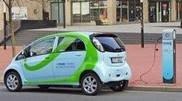
An electric car being charged
A. Where do cars get their energy from? For most cars, the answer is gasoline (petrol). But some cars use electricity. These cars have special motors that get their power from large batteries. In addition, there are some cars that have both an electric motor and a gasoline motor. These types of cars are called hybrid cars.
B. Most people tend to think of electric cars as a new invention, but they have been around for a long time. In the late 19th and early 20th centuries electric cars were popular because the technology for petrol engines was not very advanced. But once the petrol engine because easier to make and more powerful, these types of engines became the most popular. Interest in Electric cars was high in the 1970s and 1980s because oil became very expensive. Recently, electric cars have again become popular because people want cars that pollute less.
C. Electric cars are better than petrol cars in several ways. The biggest benefit is reduced pollution. In areas where there is a high percentage of electric cars, there is less pollution. But it is important to understand that electric cars still cause pollution. Remember that the electricity to power electric cars has to come from somewhere, which is most likely a power station. Unless these power stations run on solar or wind energy, they are most likely burning fossil fuels to make electricity. The second benefit of electric cars is a reduction in the dependence on foreign oil. There are several countries, including the United States, that don’t want to rely on oil coming from other countries to power their transportation systems. They want the power to come from within their country, and since electric cars can run on electricity from coal or nuclear power stations, there is less of a need to import oil.
D .Despite the benefits of electric cars, there are some problems with them as well. One disadvantage is that electric cars are more expensive than normal cars. This is mostly due to the high cost of the batteries these cars need. Electric cars run on batteries, just like a mobile phone does. But unlike a mobile phone, you cannot charge your electric car’s battery by plugging it into a wall. They need to be charged in special places. Right now, there is a lack of places where people can charge the batteries of their electric car. Another problem is that electric cars cannot travel as far as gas cars. Some people are afraid that the battery will run out of electricity (and the car will stop) before they reach their destination.
E. Despite these problems, many people, including automobile industry experts, believe that the percentage of electric cars will increase in the future.
II. Reading comprehension
1. Answer the questions. 1. What is an electric car?
2. Is an electric car a new invention?
3. Why is an electric car better than a petrol car?
4. Name the disadvantages of an electric car
5. Are electric cars popular in your country?
6. Would you like to buy an electric car? Why?
2. Complete the sentences 1. ………………special motors that get their power from large batteries.
2…………………………………, but electric carshave been around for a long time.
3. ………………………………, these types of engines became the most popular. 4. …………………….., there is less pollution.
5. ………………., there are some problems with electric cars as well.
6. ……………………., you cannot charge your electric car’s battery by plugging it into a wall.
3. Translate the sentences.
1. Електромобілі мають особливі двигуни, які живляться від великої батареї.
2. Гібрідні автомобілі мають електродвигун та бензиновий двинун.
3. Інтерес до електромобілей виріс у 1970 1980 рр., тому що бензин став дуже дорогим.
4. Найбільша перевага електромобілей – це зниження забрудення навколишнього середовища.
5. Якщо ці електростанції працюють на сонячній або вітрової енергії, вони, швидше за все, спалюють горючі копалини для виробництва електроенергії.
6. Одним з недоліків електромобілей є те, що вони дорожчі за звичайні авто.
7. Електромобілі потрібно підживлювати в спеціальних місцях.
8. Багато людей боїться, що батарея у електромобілі розрядиться, машина зупиниться і вони не зможуть дістатися до пунку призначення.
Text 7. The Future of the Automobile Industry.
I. Before you start
Can you imagine future of the automobile industry?
Vocabulary capabilities – здібності, можливості
ridesharing technologies – технології суспільного використнання
транспортних засобів cusp – верхівка
to be invirogated by – бути натхненним, підбодреним to thrive – процвітати, розвиватися to exceed – перевищувати evolving – прогресуючий, еволюцінуючий. to reinvent – знову винайти, відкрити, обновити seemingly – йморвірно, на перший погляд to undergo – підвергнутися, випробувати
semi-autonomous vehicles – напівавтономні транспорні засоби arrangement – розпорядження, домовленості
ride-sharing – їзда за обміном
ownership-sharing arrangements – механізми спільного використання
власності powertrain – силова передача, двигун та коробка передач fuel cell vehicle – електромобіль на паливних елементах to move beyond – вийти за рамки pace – темп regulator – контрольно-надзоний орган
on behalf of – від імені
II. Read the text
The Future of the Automobile Industry by: John Bozzella, President and CEO
In terms of human history, the car is a recent invention. So why have many started referring to the auto industry as an ‘old’ industry?
Will the combination of new smartphone capabilities, popular ridesharing technologies, and a trend toward increasingly crowded urban living really lead to “the end of car culture?” That notion couldn’t be further from the truth.
The auto industry is on the cusp of what could be revolutionary change.
‘Traditional’ car companies are invigorated by new technologies, and thriving as they work to develop and advance these technologies in ways that meet and exceed consumers changing preferences. As rapidly evolving technologies give us the tools to reinvent modern transportation, it creates a feeling of excitement – and also one of seemingly endless curiosity. The industry is undergoing a transformation that is causing us to reevaluate some of the most basic concepts surrounding the automobile:
Who’s driving the car?
Semi-autonomous vehicles are on the road today, and fully autonomous vehicles are no longer a distant possibility. Vehicle-to-vehicle and vehicle-toinfrastructure communications promise to revolutionize auto safety.
Who owns the car?
Ride-sharing and ownership-sharing arrangements have emerged, and both start-ups and established manufacturers are exploring new arrangements and agreements.
What’s powering the car?
There are more powertrain options than ever - gasoline-powered internal combustion engines, gas-electric hybrids, fully electric plug-in vehicles, fuel cell vehicles – all in the quest for greater efficiency and lower emissions.
Who/What is a car company?
Traditional manufacturers have been joined by Apple, Google and other technology firms, who have moved beyond simply offering entertainment systems to creating operating systems and possibly even their own cars.
What does the consumer want?
Consumers want cleaner, safer, more efficient and convenient transportation options, with all of the entertainment and information systems available today. The modern consumer wants to stay ‘connected’ as they travel.
How will we give consumers what they want?
Policymakers will play a role in establishing regulatory requirements, but the pace of innovation and change is moving faster than the ability of legislators and regulators to respond. We’ve already seen that innovators aren’t going to wait for regulation to offer consumers better products. New models, approaches and adaptability, on behalf of both the company and the government, is key. The history of the automobile is a history of economic and social mobility. Even as the industry undergoes a fundamental transformation, that foundation will not change. This perseverance and change, along with the questions mentioned above, will fuel the dialogue in The Auto Motive as we move forward. We hope you join us for the ride.
III. Reading comprehension
1. Are the statements True of False?
1. In terms of human history, the car is an old invention.
2. The auto industry is on the cusp of what could be revolutionary change.
3. The industry isn’t undergoing a transformation that is causing us to reevaluate some of the most basic concepts surrounding the automobile
4. Vehicle-to-vehicle and vehicle-to-infrastructure communications don’t promise to revolutionize auto safety.
5. Policymakers will play a role in establishing regulatory requirements, but the pace of innovation and change is moving faster than the ability of legislators and regulators to respond.
2. Complete the sentences 1. Will the combination of new smartphone capabilities …… .
2. ‘Traditional’ car companies are invigorated by new technologies, … .
3. Ride-sharing and ownership-sharing arrangements have emerged, and…. .
4. Consumers want cleaner, safer, ….. .
5. New models, approaches and adaptability, on behalf of …. .
3. Translate the sentences
1. В історії людства – машина недавній винахід.
2. Автомобільна промисловість знаходиться на порозі того, що могло б мати революційні зміни.
3.Традиційні автомобільні компанії, натхненні новими технологіями, розвивають та покращують свою продукцію.
4. Існує багато варіантів силових передач (агрегатів) бензинові двигуни внутрішнього згоряння, газово-електричні гібриди, повністю електричні, електромобілі на паливних елементах – всі спрямовані на підвищення ефективності і зниження викиднів.
5. Сьогодні автомобільні компанії співпрацюють з Google, Apple та іншими фірмами, щоб покращити можливості авто.
PART III. THE DESIGN OF A MODERN CAR Text 1. Car Exterior and Interior
I. Before you start Can you name car parts? Vocabulary hood, bonnet капот trunk, boot – багажник mirrors – дзеркала
header and nose panels – торцевий борт та передняя панель radiator support – опора радіатора grilles – решітки радіатора bumpers – бампер headlights – передні фари fender – крило radiators – радіатори doors – двері a/c condensers конденсатор системи кондиціонування повітря step bumpers – ступенька бамперу tail lights – задні габаритні вогні tailgates trunk lids – дверь багажнику
wing mirror (side-view mirror) – дзеркало заднього виду (бокове) rear-view mirror – дзеркало заднього виду visor – захистний козирок windscreen (windshield) лобове (вітрове) скло windscreen wiper (windshield wiper) – cклоочісник
air vent![]() вентиляційний отвір door handle – дверна ручка glove compartment (glove box) – бардачок headrest – підголівник passenger seat пасажирське сидіння handbrake (emergency brake) - ручне гальмо seat belt – пасок безпеки driver’s seat – місце водія brake – гальма clutch – зчеплення
вентиляційний отвір door handle – дверна ручка glove compartment (glove box) – бардачок headrest – підголівник passenger seat пасажирське сидіння handbrake (emergency brake) - ручне гальмо seat belt – пасок безпеки driver’s seat – місце водія brake – гальма clutch – зчеплення
accelerator (gas pedal) – педаль газу gear lever (gear shift) важіль перемикання передач ignition замок запалювання horn – гудок
dashboard панель приладів
milometer (odometer) прилад для вимірювання пробігу в милях fuel gauge покажчик рівня палива; датчик палива rev counter – тахометр speedometer спідометр steering wheel – кермо satnav (sat nav) – навігатор rearview mirror – дзеркало заднього виду window frame – рама вікна
seat – cидіння
windshield wiper – cклоочічник steering wheel – кермо windshield washer – cклоомивач air filter – повітряний фільтр battery – батарея distributor розподільний елемент; завантажувальний розподільний
пристрій; трамблер radiator – радіатор
alternator генератор змінного струму
oil filter масляний фільтр disk brake дискові гальма
body side moulding – накладки бокового борту кузова line shaft вал карданної передачі; головний трансмісійний вал muffler – глушник transmission – трансмісія wheel – колесо spare wheel запасне колесо; запаска tail light сигнал заднього ходу; задній ліхтар
trunk – багажник indicator – показник повороту
reverse light – фонар заднього ходу
II. Car parts vocabulary list learn the English words for car parts using pictures
Learning car parts vocabulary using pictures English lesson
Learning the vocabulary for inside and outside a car using pictures. The first picture shows the various parts for the outside of a BMW car.
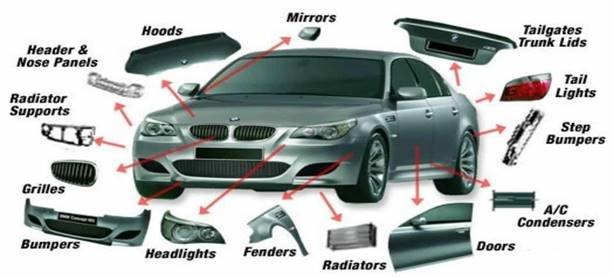
Outside a car parts vocabulary
In British English the hood is called a bonnet and the trunk is called a boot. Car parts vocabulary for in the inside of a car
The following picture shows the vocabulary for various parts for inside a car. BrE = British English NAmE = Native American.
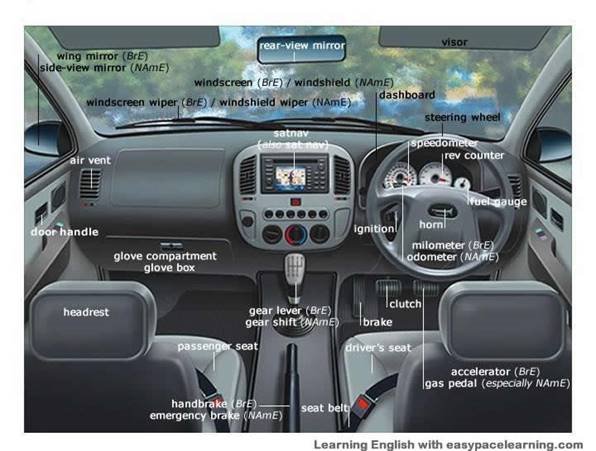
Vocabulary for parts of a car inside and outside
This last picture shows various parts of inside and outside a car that was not included in the previous pictures.
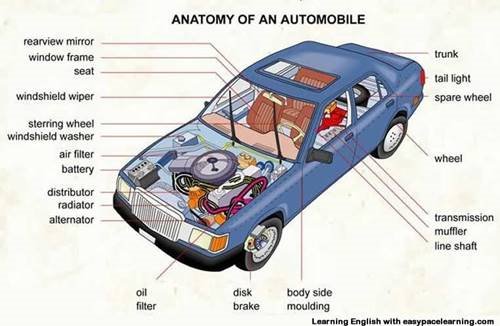
Car parts with brief description
Gear lever
Used to change gears in a car.
Seat belt
A car has seat belts in the front and back. You use the verb fasten, when you put your seat belt. John fastened is seat belt before driving off.
Steering wheel
You use the steering wheel to control the direction of the car (steer the car). Windscreen
The windscreen is the big window at the front of the car. Windscreen wipers
Are the things used when it is raining, snowing or clean dirt of the windscreen.
Head lights
They are used when driving at night and when it is raining, snow or fog.
Tail lights
The lights that are at the back of the car are call lights. The orange light are called indicators and are used when the car is turning left or right. The white part is called the reverse light and lights up when the car is reversing backwards. The red part is used when the head lights are being used so other drivers can see the car in front of them at night time or poor driving conditions. It is also called a brake light and is used when the car is using the brake pedal.
Speedometer
The speedometer shows how fast the person driving the car is driving.
Fuel gauge
Used to show how much petrol or diesel the car has left
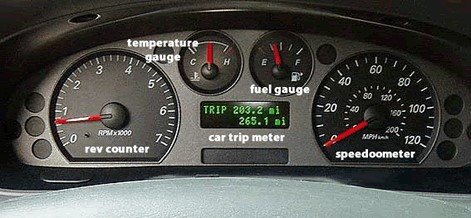
Temperature gauge
Shows how hot the cars engine is.
Car trip meter
This shows the driver how many miles the journey has took.
Rev counter
The rev counter is used to help you change gear and can be used for better fuel economy.
III. Reading comprehension
1. Write the car parts from American English into British English side-view mirror windshield windshield wiper gear shift emergency brake gas pedal odometer hood trunk
2. Write and name car exterior parts
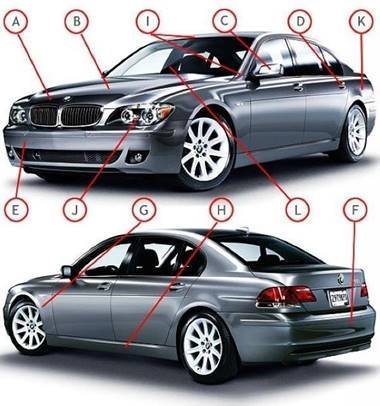
3. Write and name car interior parts
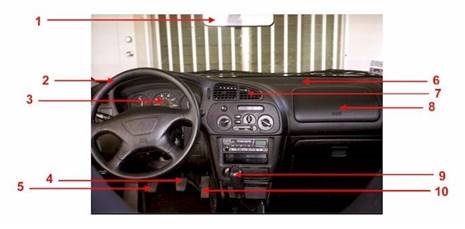
|
Text 2. Car Engine and Its Types 1. Before you start. Who invented car engine? Vocabulary |
camshaft – распредвал
pear-shaped lobes – грушоподібні виступи на куласному диску/ лопасти to actuate – призводити до руху inlet valve – впускний клапан
exhaust valve – гарачий клапан, клапан випуску
piston – поршень
flywheel – махове колесо, маховик сrankshaft – колінвал to transmit – передавати evenly – равномірно connecting rod – шатун rotary motion – обертальний рух treadle action – педальна дія sump масляна ванна; резервуар збірник (рідини) camshaft drive belt – ремінь приводу розподільного валу timing belt – зубчатий ремінь, синхроний ремінь
sprocket провідне колесо (гусениці); ланцюгова шестерня, зірочка
ланцюга vapour – пари бензину
sealed cylinder – герметичний циліндр to withstand витримати workload вантажопідйомність, робоче навантаження
robust structure – міцна конструкція detachable upper cover – знімна верхня кришка cylinder head – кришка циліндру, головка блоку.
to expel виганяти (виключати); вивергати; випустити to house – вставляти іn-line engine двигун з розташуванням циліндрів в один ряд; однорядний
двигун
V-8 engine – восьмициліндровий V-подібний двигун
horizontally-opposed engine двигун з горизонтально розташованими
оппозітнимі циліндрами; двигун з горизонтальними протилежними циліндрами cc – кубічний сантиментр
ancillary equipment – комплектуюче обладнання cast iron чавун
|
II. Read the text The engine is the heart of your car. It is a complex machine built to convert heat from burning gas into the force that turns the road wheels. The chain of reactions which achieve that objective is set in motion by a spark, which ignites a mixture of petrol vapour and compressed air inside a momentarily sealed cylinder and causes it to burn rapidly. That is why the machine is called |
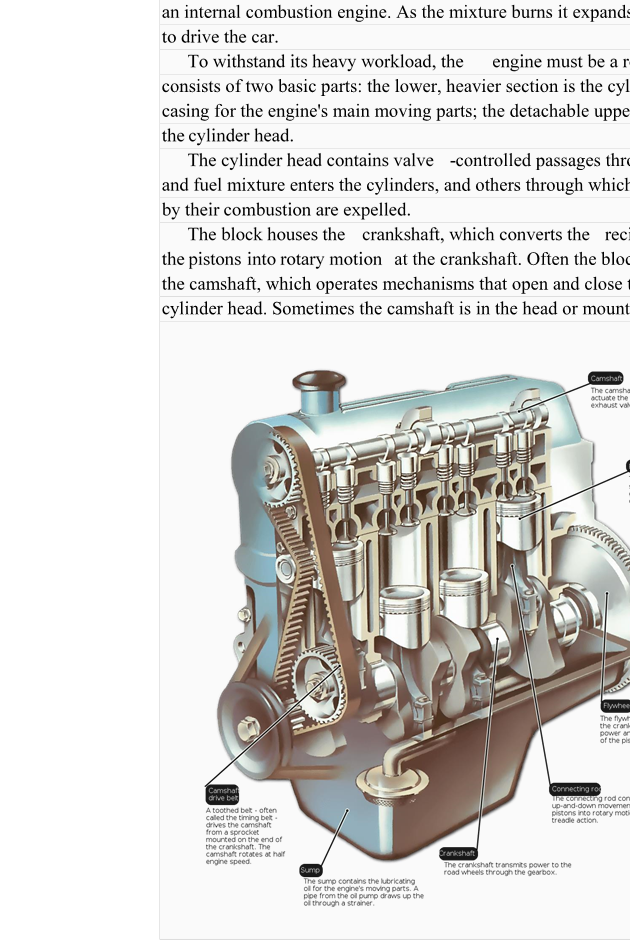
Different engine layouts
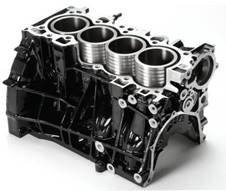
In-line engine
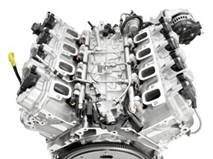
V-8 engine
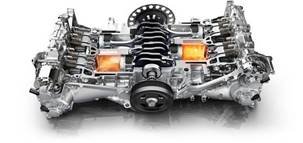
Horizontally-opposed engine
The simplest and most common type of engine comprises four vertical cylinders close together in a row. This is known as an in-line engine. Cars with capacities exceeding 2,000cc often have six cylinders in line.
The more compact V-engine is fitted in some cars, especially vehicles with eight or 12 cylinders, and also some with six cylinders. Here the cylinders are arranged opposite each other at an angle of up to 90 degrees.
Some engines have horizontally opposed cylinders. They are an extension of the V-engine, the angle having been widened to 180 degrees. The advantages lie in saving height and also in certain aspects of balance.
The cylinders in which the pistons operate are cast into the block, as are mountings for ancillary equipment such as a filter for the oil which lubricates the engine, and a pump for the fuel. An oil reservoir, called the sump, is bolted underneath the crankcase.
Both block and head are usually made of cast iron. But sometimes aluminium is chosen for the head, because it is lighter and dissipates heat more efficiently.
III. Reading comprehension
1. Are the statements true or false? Correct the false ones
1. The flywheel is a heavy disk attached to the crankshaft.
2. To withstand its heavy workload, the engine mustn`t be a robust structure.
3. The cylinder head contains valve-controlled passages through which the air and fuel mixture enters the cylinders.
4. The most difficult type of engine comprises four vertical cylinders close together in a row.
5. The more compact V-engine is fitted in some cars, especially vehicles with eight or 10 cylinders, and also some with four cylinders.
2. Complete the sentences
1. A toothened belt often called ….. .
2. The chain of reactions which achieve that ….. .
3. An in-line engine is the simpliest … .
4. Some engines have horizontally …. .
5. The cylinders in which the pistons operate are cast into the block, as … .
3. Translate the sentences
1. Двигун це складний агрегат побудований для конвертування тепла від спалювання газу в силу, яка обертає колеса автомобіля.
2. Колінчастий вал передає потужність на колеса через коробку передач.
3. Двигун складається з двох основних частин: нижньої, більш важкої секції блоку циліндрів, ящика для основних рухомих частин двигуна; знімної верхньої кришки головки блоку циліндрів.
4. Більш компактний V-подібний двигун встановлений в деяких автомобілях, особливо у автомобілів з вісьмома або 12 циліндрами, а також у деяких авто з шестьома циліндрами.
5. Циліндри, поршні яких працюють залиті в блок, як і кріплення для допоміжного обладнання, такого як фільтр для масла, яке змащує двигун і насос для палива.
4. Аnswer the questions
1. What is an engine?
2. What parts does the engine consist of?
3. What do you know about the block?
4. Describe the most common types of engines.
Text 3. CarIgnition system
I. Before you start
What is the function of the car engine? Vocabulary ignition system – система запалювання to generate – виробляти, викликати combustion chambers – камери згорання
ignition switch - гніздо запалювання; замок запалювання; ключ
запалювання; замок / вимикач запалювання
HT lead провід високої напруги LT lead – провід низької напруги coil – cпіраль, катушка запалювання
camshaft распредвал; розподільний кулачковий вал
drive вузол приводу; провідна шайба; повідкова планшайба; приведення
в дію; приводний; приводний блок; електропривод змінного струму distributor cam кулачок переривника; кулачок розподільника contact-breake points – точки контакту вимикача rotor arm – ручка розподільника запалювання
plug lead – провід свічки
distributor розподільний елемент; завантажувальний розподільний
пристрій; трамблер plug cap on terminal – клемна колодка, свічка
contact-breaker переривник контактів (розподільника запалювання);
контактний переривник crankshaft – колінвал bowl чашковий живильник; чашковий бункер
ignition timing установка кута випередження запалювання; момент
розмикання контактів переривника; установка кута випередження запалювання (або уприскування палива); установка випередження запалювання; випередження запалювання; регулювання запалювання to alter – змінювати distributor cap – кришка розподільника nonconductive – ізолюючий, непровідний
spring-loaded brush – контактна щітка, навантажена пружиною winding – зигзаг, провід прошивки point – контакти, щуп cam – кулачковий упор throttle – дроссель to protrude – випирати
II. Read the text
![]() The purpose of the ignition system is to generate a very high voltage from the car's 12 volt battery, and to send this to each sparkplug in turn, igniting the fuel-air mixture in the engine's combustion chambers.
The purpose of the ignition system is to generate a very high voltage from the car's 12 volt battery, and to send this to each sparkplug in turn, igniting the fuel-air mixture in the engine's combustion chambers.
The coil is the component that produces this high voltage. It is an electromagnetic device that converts the low-tension (LT) current from the battery to high-tension (HT) current each time the distributor contact-breaker points open.
The distributor unit consists of a metal bowl containing a central shaft, which is usually driven directly by the camshaft or, sometimes, by the crankshaft.
The bowl houses the contact-breaker points, rotor arm, and a device for altering the ignition timing. It also carries the distributor cap.
Distributing the current
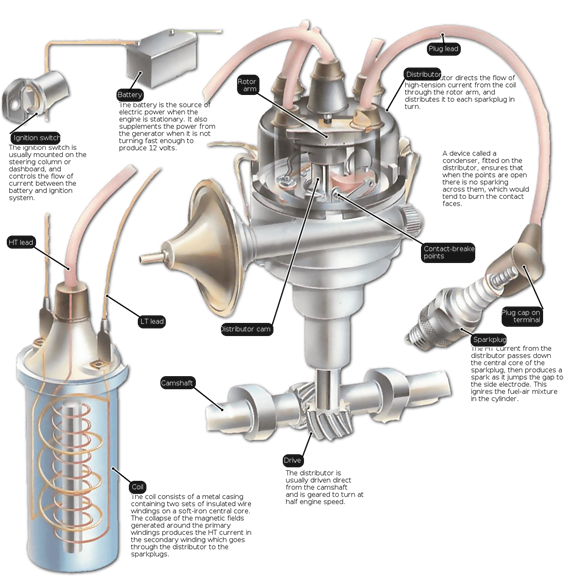
The distributor cap is made of nonconductive plastic, and the current is fed to its central electrode by the HT lead from the centre of the coil.
|
Inside the cap there are more electrodes often called segments to which the sparkplug leads are connected, one per cylinder. The rotor arm is fitted on top of the central shaft, and connects to the central electrode by means of a metal spring or spring-loaded brush in the top of the distributor cap. The current enters the cap through the central electrode, passes to the centre of the rotor arm through the brush, and is distributed to each plug as the rotor arm revolves. As the rotor arm approaches a segment, the contact-breaker points open and HT current passes through the rotor arm to the appropriate sparkplug lead. The contact-breaker points are mounted inside the distributor. They act as a switch, in synchronisation with the engine, that cuts off and reconnects the 12 volt low-tension (LT) circuit to the coil. The points are opened by cams on the central shaft, and are closed again by a spring arm on the moving contact. With the points closed, LT current flows from the battery to the primary windings in the coil, and then to earth through the points. When the points open, the magnetic field in the primary winding collapses and high-tension (HT) current is induced in the secondary windings. This current is transferred to the sparkplugs through the distributor cap. On a four-cylinder engine there are four cams. With each full rotation of the shaft the points open four times. Six-cylinder engines have six cams and six electrodes in the cap. The position of the points and the distributor's body in relation to the central shaft can be adjusted manually. This alters the timing of the spark to obtain an exact setting . Further changes occur automatically as the engine speed varies according to the throttle opening. In some modern ignition systems, micro-electronics ensure the optimum ignition timing for all engine speeds and engine load . Completing the circuit The sparkplugs are screwed into the combustion. HT current passes from each segment on the distributor cap down the plug leads to the plug caps. It then passes down the central electrode, which is insulated along its length, to the nose of the plug. |
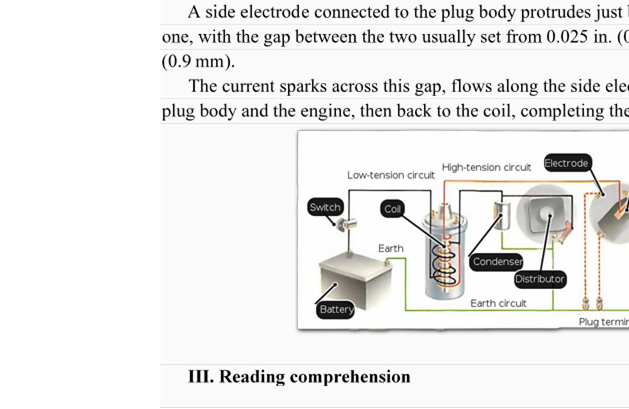
1. Answerthe questions
1. What is the purpose of the ignition system
2. What is the coil?
3. What parts does the distributor unit consist of ?
4. The distributor cap is made of nonconductive plastic, isn’t it?
5. Where is the rotor arm fitted?
6. How many cams are there on the four-stroke engine?
2. Comolete the sentences
1. The purpose of the ignition system is to generate a very high voltage …. .
2. The coil is an electromagnetic device …. .
3. Inside the cap there are more electrodes often called ….. .
4. As the rotor arm approaches a segment, …. .
5. The contact-breaker points act as a switch, in synchronisation with …. .
6. A side electrode connected to the plug body protrudes just below the central one, with the gap between ... .
3. Translate the sentences
1. Метою системи запалювання є створення дуже високої напруги від 12вольтової батареї автомобіля, спрямовування її в кожну свічки запалювання, та в свою чергу, підпалювання паливно-повітряної суміші в камері згоряння двигуна.
2. Катушка запалювання електромагнітний пристрій, який перетворює струм низької напруги від батареї на струм високої напруги, кожного разу коли контакти переривача розімкнуті.
3. Чашковий живильник включає в себе точки контакту вимикача, ручку розподільника запалювання, та пристрій для змінювання регулювання запалювання.
4. Кришка розподільника зроблена з непровідного пластика, а струм подається на її центральний електрод за допомогою проводу високої напруги від центру катушки.
5. Контакти переривача закріплені у трамбльорі.
6. Побічний електрод з'єднаний з корпусом штекера висовується трохи нижче центрального, з зазором від 0.025 дюймів (0,6 мм) до 0,035 дюймів (0,9 мм).
Text 4. Automobile Charging System
I. Before you start
What is сar ignition system?
Vocabulary charging system – зарядна система topped up – доповнений, долитий lead plates – свинцеві пластини immersed – занурений sulphuric acid – сірчана кислота terminal – клемма to dissolve off – розчиняти
alternator – алтернатор, генератор змінного струму dynamo – генератор постійного току, динамо-машина stator – статор, направляючий аппарат wire coil windings – дріт котушки обмотки
carbon or copper-carbon brushes – графітові або мідно-графітові щітки slip rings – кільця генератору stator coils – катушка обмотки статора rectified – ректифікований, виправлений
ammeter – амперметр magnet – електромагніт loop – петля, замкнутий ланцюг field coils – індукаторна катушка armature – сердечник, якір мотору commutator – перемикач, електромашинний коллектор
transistor-operated control device – транзисто-керований прилад контролю rectifier випрямляч regulator – регулятор relays – реле, перемикач
|
|
II. Read the text

Inside an alternator the belt-driven rotor becomes an electromagnet when current is fed to it. As the rotor revolves it generates a higher current in the stator windings.
A car uses quite a lot of electricity to work the ignition and other electrical equipment.
If the power came from an ordinary battery, it would soon run down. So a car has a rechargeable battery and a charging system to keep it topped up.
The battery has pairs of lead plates immersed in a mixture of sulphuric acid and distilled water.
Half of the plates are connected to each terminal. Electricity supplied to the battery causes a chemical reaction that deposits extra lead on one set of plates.
When the battery supplies electricity, exactly the opposite happens: the extra lead dissolves off the plates in a reaction that produces an electric current.
The battery is charged by an alternator on modern cars, or by a dynamo on earlier ones. Both are types of generator, and are driven by a belt from the engine.
The alternator consists of a stator a stationary set of wire coil windings, inside which a rotor revolves.
The rotor is an electromagnet supplied with a small amount of electricity through carbon or copper-carbon brushes (contacts) touching two revolving metal slip rings on its shaft.
The rotation of the electromagnet inside the stator coils generates much more electricity inside these coils.
The electricity is alternating current - its direction of flow changes back and forth every time the rotor turns. It has to be rectified - turned into a one-way flow, or direct current.
A dynamo gives direct current but is less efficient, particularly at low engine speeds, and weighs more than an alternator.
A warning light on the dashboard glows when the battery is not being adequately charged, - for example, when the engine stops.
There may also be an ammeter to show how much electricity is being generated, or a battery-condition indicator showing the battery's state of charge.
How the Alternator Works How the current flows in the alternator
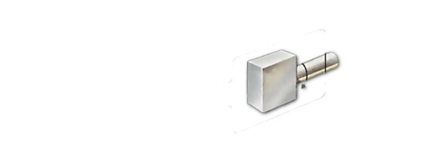
Moving a magnet past a closed loop of wire makes an electric current flow in the wire. Imagine a loop of wire with a magnet inside it.
The north pole of the magnet passes the top of the loop as the south pole passes the bottom of it. Both passes make current flow in one direction round the loop.
The poles move away, and current stops flowing until the south pole reaches the top and the north pole the bottom.
This makes current flow again, but in the opposite direction.
A car alternator uses an electromagnet in order to boost output of electric current.
How a Dynamo Works
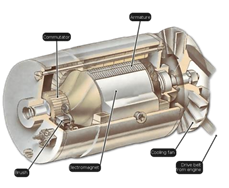
Field windings inside the body are a dynamo's electromagnet. Current is generated in the revolving armature.
In a dynamo the electromagnets are stationary, and are called the field coils.
The current is produced in an armature another set of coils wound on to a shaft and turning inside the field coils.
The principle is the same as that of the alternator, but the current goes to a commutator a metal ring split into segments that are touched by carbon brushes fitted in spring-loaded guides. Two segments touch a pair of brushes and feed current to them.
As the armature turns, the current changes direction. But by then another pair of commutator segments has come under the brushes, and this pair is wired up the other way round so the current coming out always flows in the same direction.
Regulating the Current to the Battery
The current from an alternator is rectified into direct current by a set of diodes that allow current to flow through them in one direction only.
To charge the battery the voltage supplied to it must not be too low or too high.
The alternator has a transistor-operated control device that regulates the voltage by supplying more or less current as required to the electromagnet.
The rectifier and regulator are usually inside the alternator housing, but on some alternators they are outside, mounted on the alternator body.
A dynamo does not need a rectifier there is a voltage regulator in a separate box, which has relays.
One relay controls the voltage level by briefly cutting off the current in the field coils.
The second relay prevents the dynamo from overcharging and damaging the battery.
The third relay stops the battery discharging when the dynamo is turning too slowly to charge it.
III. Reading comprehension 1. Answer the questions
1. What does a car use to work the ignition and other electrical equipment?
2. What does the battery have?
3. What happens when the battery supplies electricity?
4. How is the battety charged on different kinds of cars?
5. What is the rotor
6. Tell about poles of the magnet.
7. Are the electromagnets in dynamo stationary?
8. Tell about regulating the current to the battery
2. Open the brakets. Use the correct verb form
1. If the power __________ (come) from an ordinary battery, it would soon run down.
2. Half of the plates ______________ ( connect)to each terminal.
3. The alternator __________ (consist) of a stator a stationary set of wire coil windings, inside which a rotor revolves.
4. A dynamo __________ (give) direct current but is less efficient, particularly at low engine speeds, and ___________(weigh) more than an alternator.
5. The poles________________ (move) away, and current ______________(stop) flowing until the south pole ______________(reach) the top and the north pole the bottom.
6. In a dynamo the electromagnets _________ (be) stationary, and
__________ (call) the field coils.
7. The current from an alternator _____________ (rectify) into direct current by a set of diodes that _________ (allow) current to flow through them in one direction only.
8. The alternator _________ (have) a transistor-operated control device that regulates the voltage by supplying more or less current - as required - to the electromagnet.
3. Translate the sentences
1. Автомобіль використовує багато електроенергії для роботи запалювання та іншого електроустаткування.
2. Aвтомобіль має акумуляторну батарею та систему зарядки.
3. Акумулятор має пари свинцевих пластин, занурених в суміші сірчаної кислоти і дистильованої води.
4. Акумулятор заряджається від генератора на сучасних автомобілях, або динамо-машиною на старих.
5. Генератор складається із статора – нерухомого набору проводів обмотки котушки, всередині якої обертається ротор.
6. Електрика змінний струм, напрям, якого змінюється назад і вперед щоразу, коли ротор обертається.
7. У динамо-машині електромагніти є стаціонарними, і називаються індукаторною катушкою.
8. Для зарядки акумулятора напруга, що подається до нього не повинна бути занадто низькою або занадто високою.
Text 5. Cooling System and Its Maintenance
I. Before you start
How does the charging system work Vocabulary cooling system – система охолодження
specific auto guidelines – конкретні вказівки з експлуатації авто inspection – огляд belt – ремінь приводу upper hose – верхній шланг lower hose – нижній шланг heater hoses шланг обігрівача heater core – радиатор обігрівача
reserve tank запасний бак; компенсаційний бачок
pressure cap кришка герметизированої системи, герметична кришка thermostat – термостат radiator – радіатор fan – вентилятор water pump – водяний насос
transmission cooler охолоджувач масла коробки передач
external leaks – зовнішні витоки
engine coolant passages проходи для охолоджуючої рідини двигуна an internal leak test внутрішнє випробування на герметичність combustion gas leakage витік газу згоряння antifreeze – антифриз, «незамерзайка» coolant – охолоджууча рідина to maintain – підтримувати, зберігати to accomplish – виконувати, здійснювати
ambient temperature – температура навколишнього середовища
low freezing point – низька температура замерзання a high boiling point – висока точка кипіння additives – додатки rust – іржа to pressurize – герметизувати looking – вибіркова реалізація cracking – розтріскання splitting – розщеплення bulging – вигінання, потовщення
swelling – продутість
molded hose – формований шланг obstruction – непрохідність hose clamps – хомут шлангу
V belt – кленовий ремінь, V – образний ремінь serpentine belt – полікліновий ремінь alternator – генератор перемінного току
steering pump насос рульового механізму; насос гідропідсилювача
рульового управління air conditioner compressor – компересор кондиціонера
timing belt ремінь приводу газорозподільного механізму; ремінь ГРМ;
зубчастий ремінь приводу deionized – деонізований pulley – шків frayed – зношений glazed – засалений to adjust – регулювати
spring-loaded tensioners – пружинні натягувачі
II. Read the text
Cooling System Auto Maintenance
It is recommended that a seven (7)-point preventative cooling system maintenance check be performed at least once every two years. Consult your vehicle owners manual for specific auto guidelines. This inspection is designed to identify areas that need attention, and consists of:
• a visual inspection of all cooling system components, including belts and hoses
• a radiator cap pressure test to check for the recommended system pressure level
• a thermostat check for proper opening and closing
• a pressure test to identify any external leaks to the cooling system parts; including the radiator, water pump, engine coolant passages, radiator and heater hoses and heater core
• an internal leak test to check for combustion gas leakage into the cooling system
• an engine cooling fan test for proper operation
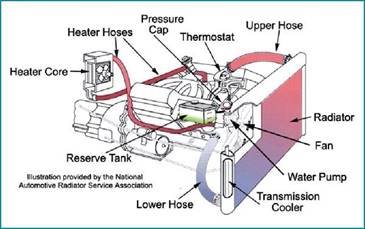
Cooling System Operation Antifreeze/Coolant
The main function of the сooling іystem is to carry heat away from the engine and maintain the desired operating temperature. This is accomplished by circulating antifreeze/coolant through the engine, where heat is generated, and carrying it to the radiator to be cooled.
Modern automobiles operate in a wide variety of ambient temperatures, from well below freezing to well over 100 F. The fluid used to cool the engine must have a very low freezing point, a high boiling point, and it must have the ability to transfer heat.
An adequate amount of an antifreeze/coolant and water mixture is necessary to reduce the possibility of engine overheating and freezing, and contain additives to prevent rust and corrosion in the cooling system.
Water is one of the most effective fluids for holding heat, but water freezes at too high a temperature to be used in automobile engines alone.
The fluid used in most vehicles is a mixture of water and ethylene glycol, also known as "antifreeze" or "coolant". By adding antifreeze to water, the boiling and freezing points are improved significantly.
The temperature of the coolant can sometimes reach 250 to 275 F (121 to 135 C). Even with antifreeze added, these temperatures would boil the coolant. To prevent this, the cooling system is pressurized, which further raises the boiling point of the coolant. Most systems have around 14 to 15 pounds per square inch (psi), which raises the boiling point approximately 45 F so the coolant can endure the high temperatures produced in the engine.
Coolant Hoses
The radiator hoses and heater hoses are easily inspected by opening the hood and looking. You want to be sure that the hoses have no cracking or splitting and that there is no bulging or swelling at the ends.
If there are any signs of problems, the hose should be replaced with the correct part number for the year, make, model and engine of the vehicle.
Never use a universal hose unless it is an emergency and a proper molded hose is not available.
For either the radiator hoses or the heater hoses, make sure that you route the replacement hose in the same way that the original hose was running. Position the hose away from any obstruction that can possibly damage it and always use new hose clamps.
After the cooling system is refilled with the proper coolant mixture, a pressure test should be performed to ensure that there are no leaks.
Belts
On most older vehicles, the water pump is driven by either a V belt or serpentine belt on the front of the engine that is also responsible for driving the alternator, power steering pump and air conditioner compressor. These types of belts are easy to inspect and replace if they are worn. Check for dry cracking on the inside surface of the belt.
On newer vehicles, the water pump is often driven by the timing belt. This belt usually has a specific life expectancy at which time it must be replaced to insure that it does not fail. Since the timing belt is inside the engine and will require partial engine disassembly to inspect, it is very important to replace the timing belt at the scheduled interval.
Things to watch for
• Check antifreeze/coolant level monthly. Only use a 50/50 solution of antifreeze/coolant and water.
• Water quality plays an important role in protecting the cooling system. A high mineral content may cause scaling or corrosion. Deionized or distilled water should be used in 50/50 solution
• CAUTION: Do not remove the radiator pressure cap when the engine is HOT.
• Inspect belts monthly. Replace belts that are worn, frayed or glazed. Adjust belts when more than 1/2 inch can be depressed between the pulleys.
• Belts with spring-loaded tensioners do not require manual adjustments.
• Replace bulging, rotten, or brittle hoses and tighten hose clamps. If a hose looks bad or feels too soft or too hard, it should be replaced.
III. Reading comprehension 1. Are the statements true or false. Correct the false ones
1. The main function of the сooling іystem is to carry heat away from the engine and maintain the desired operating temperature.
2. Modern automobiles don’t operate in a wide variety of ambient temperatures, from well below freezing to well over 110 F.
3. Water is one of the most effective fluids for holding cold, but water boils at too high a temperature to be used in automobile engines alone.
4. The temperature of the coolant can sometimes reach 250 to 275 F (121 to 135 C).5. The radiator hoses and heater hoses are easily inspected by opening the hood and looking.
6. Never use a universal hose unless it is an emergency and a proper molded hose is not available.
7. On most new vehicles, the water pump is driven by either a V belt or serpentine belt on the front of the engine that is also responsible for driving the alternator, power steering pump and air conditioner compressor.
8. Check antifreeze/coolant level monthly. Only use a 50/50 solution of antifreeze/coolant and water.
2. Complete the sentences 1. Check all cooling system components, including belts and …. .
2. Make a pressure test to identify any external leaks to the cooling system parts; including….. .
3. The main function of cooling system is accomplished by circulating antifreeze/coolant through the engine, where …. .
4. An adequate amount of an antifreeze/coolant and water mixture is necessary to reduce the possibility of engine overheating and freezing, and … . 5. By adding antifreeze to water, the boiling and …. .
6. You want to be sure that the hoses have no cracking or splitting and that there is no….. 7. Position the hose away from any obstruction that can …. .
8. Since the timing belt is inside the engine and will require partial engine disassembly to inspect, it is very important …. .
3. Translate the sentences
1. Рекомендується сім (7) пунктів профілактичного обслуговування системи охолодження перевірити, які потрібно виконувати принаймні один раз кожні два роки.
2. Рідина, що використовується для охолодження двигуна повинна мати дуже низьку температуру замерзання, високу температуру кипіння, і вона повинна мати можливість передавати тепло.
3. Якщо є які-небудь ознаки проблем, патрубок повинен бути замінений з правильним номером деталі, маркою, моделлю двигуна автомобіля.
4. Рідина, що використовується в більшості транспортних засобів являє собою суміш води і етиленгліколю, також відомий як «антифриз» або «охолоджуючої рідини».
5. Для запобігання закипання охолоджуючої рідини, система охолодження знаходиться під тиском, що підвищує температуру кипіння охолоджуючої рідини.
6. Для обох шлангів радіатора або шлангів обігрівача, переконайтеся, що ви спрямовуєте заміну шлангів таким же чином, як був установлений оригінальний шланг.
7. Якість води грає важливу роль в захисті системи охолодження. Високий вміст мінеральних речовин може стати причиною оплавлення або корозії. Деіонізована або дистильована вода повинна бути використана в співвідношенні 50/50.
8. Оглядайте ремені приводу щомісяця. Замініть зношені, потерті або засалені ремні. Регулюйте ремені, коли більш ніж на 1/2 дюйма ослаблені між шківами.
Text 6. Autobraking System and Its Types
I. Before you start
What is the function of the cooling system?
Vocabulary hydraulically – гідравлічний
friction – тертя piston – поршень
master cylinder – головний гальмівний циліндр brake fluid – гальмівна рідина brake line – гальмівна магістараль, трубка гальмівної системи caliper – гальмівний суппорт, тальмівна скоба disc brake pad – гальмівні колодки rotor – ротор, робоче колесо
wall of the brake drum – стінка гальмівного барабану disc brake – гальма дискового типу
wheel bearing – підшипник колеса; роликовий підшипник
wheel studs – колісні шпільки disc/rotor – диск/ ротор disc pads – колодки гальмівного диску caliper assembly – суппорт у зборі drum brake – гальма барабанного типу
wheel cylinder – робочий гальмівний циліндр; колісний гідравлічний
гальмівний циліндр; колісний циліндр гідравлічного гальма hardware – комплектуюче обладнання; кріплення springs – рессори parking brake cable – трос приводу стоячого гальма self-adjuster – пристрій автоматичного регулювання зазорів brake shoes – гальмівні колодки, гальмівні башмаки backing plate – опорний диск valve – клапан
hub – втулка колеса, трубна муфта, (гальмівний башмак) axle assembly – міст у зборі
inhibitor – стабілізатор, конверсуюча речовина to deplete руйнуватися еxcessive moisture – зайва волога
MAP (Motorist Assurance Program) – программа забезпечення автомобілістів scraping – дряпання grinding noise – скрегіт copper content – вміст міді
ppm (parts-per-million) ч/ млн spongy – м'який, недостатньо жорский
brake system warning lamp – контрольна лампа гальміної системи ft футів
II. Read the text
|What is an auto braking system?
An automotive braking system is a group of mechanical, electronic and hydraulically activated components which use friction / heat to stop a moving vehicle.
How does a braking system work?
When the brake pedal is depressed, the pressure on the brake pedal moves a piston in the master cylinder, forcing the brake fluid from the master cylinder through the brake lines and flexible hoses to the calipers and wheel cylinders. The force applied to the brake pedal produces a proportional force on each of the pistons.
The calipers and wheel cylinders contain pistons, which are connected to a disc brake pad or brake shoe. Each output piston pushes the attached friction material against the surface of the rotor or wall of the brake drum, thus slowing down the rotation of the wheel.
When pressure on the pedal is released, the pads and shoes return to their released positions. This action forces the brake fluid back through the flexible hose and tubing to the master cylinder.
What components are in the auto braking system?
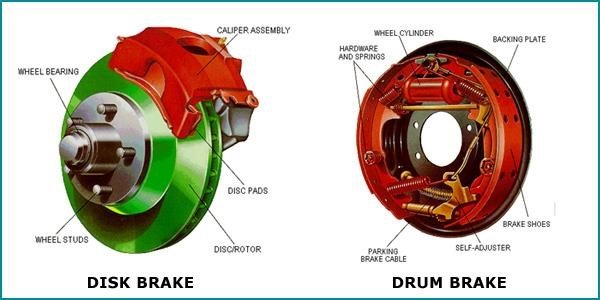
Disc Brakes
Disc Brakes are comprised of a disc or rotor, a caliper assembly, disc brake pads and the wheel bearings and hardware necessary to mount the components on the vehicle. The caliper is connected to the master cylinder through tubes, hoses and valves that conduct brake fluid through the system.
Drum Brakes
Drum Brakes are comprised of a drum & backing plate, a hub or axle assembly, brake shoes , wheel cylinder, wheel bearings and hardware necessary to mount these components on the vehicle. The wheel cylinder is connected to the master cylinder through tubes, hoses and valves that conduct brake fluid through the system.
Brake Fluid:
Brake fluid is a type of hydraulic fluid used in brake applications for automobiles and light trucks. It is used to transfer force under pressure from where it is created through hydraulic lines to the braking mechanism near the wheels. Braking applications produce a lot of heat so brake fluid must have a high boiling point to remain effective and must not freeze under operating conditions. Brake fluid is also designed to protect against corrosion of the system materials it contacts, however those corrosion inhibitors deplete over time.
Excessive moisture is also an issue. MAP continues to seek additional information from brake fluid manufacturers and other technical experts to identify the point of vaporization that may seriously affect braking efficiency and safety.
Things to watch for
• Scraping or grinding noise coming from the brakes
• Test of Brake fluid indicates a copper content of 200 ppm or greater indicating the need for a fluid replacement
• Brake pedal feels soft or spongy when the brakes pedal is depressed
• Vehicle pulls to one side when the brakes are applied
• Brake fluid level in master cylinder low
• Brake system Warning Lamp stays illuminated
How long does it take to stop an automobile?

III. Reading comprehension 1. Are the statements true or false. Correct the false ones
1. When the brake pedal is depressed, the pressure on the brake pedal moves a piston in the master cylinder.
2. The force applied to the brake pedal doesn’t produce a proportional force on each of the pistons.
3. Each output piston pushes the attached friction material towards the surface of the rotor or wall of the brake drum, thus slowing down the rotation of the wheel.
4. When pressure on the pedal is released, the pads and shoes return to their released positions.
5. The wheel cylinder is connected to the master cylinder through tubes, hoses and valves that conduct brake fluid through the system.
6. Brake fluid is a type of hydraulic fluid used in brake applications for automobiles and heavy trucks.
2. Complete the sentences
1. The calipers and wheel cylinders contain pistons, which ….. . 2. The caliper is connected to the master cylinder through tubes, ….
3. Braking applications produce …. .
4. MAP continues to seek additional information …. .
5. Brake pedal feels soft or spongy …. .
6. Test of Brake fluid indicates a copper content of …. .
3. Translate the sentences
1. Автомобільна система гальмування представляє собою групу механічних, електронних та гідравлічно приводних компонентів, які використовують тертя / нагрів, щоб зупинити рух транспортного засобу.
2. Гальмівні супорти та робочі гальмііні циліндри містять поршні, які з'єднані з гальмівними колодками або гальмівним башмаком.
3. Ця дія змушує гальмівну рідину текти назад через гнучкий шланг та трубки до головного гальмівного циліндру.
4. Гальма дискового типу складаються з диска або ротору(робочого колеса), суппорту у зборі (суппорту гальмівного диску ), роликових підшипників та комплекутуючого обладнання, необхідного для монтажу елементів на транспортному засобі.
5. Гальма барабанного типу складаються з барабану та опорного диску, втулки колеса або мосту в зборі, гальмівних колодкок, робочого гальмівного циліндру, колісних підшипників та комплектуючого обладнання, необхідного для установки цих компонентів на транспортному засобі.
6. Гальмівна рідина використовується для передачі сили під тиском, де вона створюється за допомогою гідравлічних ліній до гальмівного механізму поблизу колес.
Text 7. Types of Car Transmissions
Before you start
What types of brakes do you remember?
Vocabulary
electronically controlled automatic transmission – автоматична коробка
передач з електронним управлінням manual transmission – механічна коробка передач
semi-automatic transmission – напіватоматична коробка передач continuously variable transmissions – безступіпчата трансміссія prone to failure – схильний до відмов
II. Read the extract
While manual transmissions have remained relatively unchanged over the years, electronically controlled automatic, semi-automatic, and continuously variable transmissions (CVTs) have become increasingly complex, but also easier to use than ever before. However, modern transmissions of all types have become more prone to failure, primarily because of this higher level of complexity.
The following guide outlines the inner workings and differences between the most common types of transmissions and lists the primary advantages and disadvantages of each.
Text A. Manual Transmissions
Vocabulary gear ratios – коефіцієнт передачі
a gear selector mechanism – механізм перемикання передач to disengage – відключати torque – крутний момент
shaft – вал
primary cluster – первинний кластер gears – зубчасті колеса
engage – з'єднання, входження у зчеплення
cluster gears – багатовенцове зубчасте колесо; група шестерень в одному
блоці; каретка roller bearing – роликовий підшипник
input shaft – вхідний вал
synchronisation mechanism – механізм синхронізації aligned – вирівняний drivetrain – двигун і трансмісія robust – міцний
high torque loads – високий крутний момент навантаження
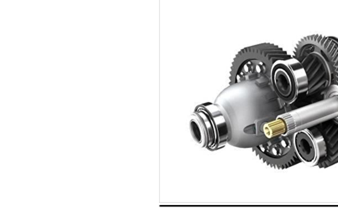
As the name suggests, the selection of gear ratios on manual transmissions is accomplished by manually shifting a gear selector mechanism that disengages one gear and selects another. Most modern types of this transmissions have five or six forward (and one reverse) gears.
This type of transmission is connected to the engine via a clutch, which if disengaged (by pressing the foot pedal or hand lever), removes torque from the system. With the clutch engaged, power is delivered to the transmission through an input shaft that is separated from the primary cluster, and which can rotate at a different speed to the cluster. The cluster is comprised of gears that can be moved to either engage, or disengage from fixed gears on the secondary shaft, which is normally located below the cluster gears, and supported by roller bearings in its casing.
Gear Selection
The input shaft has only one gear that engages with a gear on the secondary shaft. When it is running and the clutch engaged, the transmission is said to be in “Neutral”. No gears on the primary are engaged with gears on the secondary shaft.
When shifting into first gear (for example), the gear on the primary shaft is slowed down by a synchronisation mechanism, and aligned with a gear on the secondary shaft. The current gear is always disengaged before the next one is engaged. When the clutch is re-engaged, rotational energy is transferred from the transmission to the axle(s) by the drivetrain.
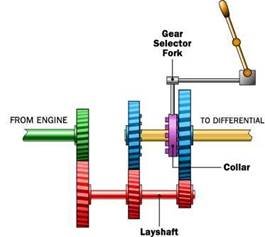
By using progressively smaller ratios, the speed of the vehicle can be maintained or increased using less power from the engine.
Advantages
• Extremely robust, and can handle high torque loads.
• Very reliable, and relatively easy to service, maintain, and repair.
• The solid link between driving wheels and the engine provided by this transmissions provide a valuable driving aid to drivers in the off-road environment, by allowing the use of engine braking while descending slippery slopes where the use of ABS brakes could be dangerous.
• Cheapest to repair
Disadvantages
• Learning curve – can be difficult to operate for drivers who are accustomed to automatic
Reading comprehension
1. Are the statement true or false? Correct the false ones 1. Manual transmission is connected to the engine via a clutch.
2. With the clutch engaged, power is delivered to the transmission through an input shaft that is separated from the secondary cluster.
3. The input shaft has only two gears that engage with a gear on the secondary shaft.
4. When it is running and the clutch engaged, the transmission is said to be in
“Neutral”.
5. It is easy to operate for drivers who are accustomed to automatic transmission.
2. Complete the sentences
1. As the name suggests, the selection of gear ratios on manual transmissions is accomplished by ….. .
2. . The cluster is comprised of gears …. .
3. When the clutch is re-engaged, …. .
4. By using progressively smaller ratios ….. .
5. The solid link between driving wheels and the engine provided by …. .
3. Translate the sentences
1. Більшість сучасних типів цієї передачі мають п'ять або шість передніх передач та одну задню передачу.
2. Ніякі шестерні на ведучому валу не входять в зчеплення з шестернями на вторинному валу.
3. Коли переключають передачу, енергія обертання передається на вал за допомогою ланцюга приводу.
4. Механічна коробка передач дуже надійний і відносно проста в технічному обслуговуванні та ремонті.
5. Механічна коробка передач надає цінну допомогу для водіїв під час керування в умовах бездоріжжя, що дозволяє використовувати гальмування двигуном при спуску на слизьких схилах, де використання автоматичної системи гальмування може бути небезпечним.
4. Name cars with the manual transmission.
5. Name advantages and disadvantages of manual transmission. Text B. Fully Automatic Transmissions
Vocabulary
hydraulically operated control system – гідравлічна система керування neutral (N) – нейтральна передача, нейтральний режим park (P) – паркувальне блокування drive (D) – основиний режим руху, рух уперед performance mode – режим продуктивності traction control – антипробуксовочна система, регулятор тяги stability control – система курсової стійкості, система динамічної
стабілізації autonomous braking – автономнее гальмування pressurized – під тиском planetary gear – шестерня планетарної передачі clutch – муфта
rotational energy – енергія обертального руху
torque converter – гідроторансформатор (крутячого моменту) shearing strength – сила утримання flywheel – махове колесо, маховик turbine – турбина, турбинне колесо
stator – статор, реактор pump – насос
transmission input shaft – ведучий вал коробки передач, приводний вал
коробки передач torque converter housing – картер гідротрансформатора spring tension – натягування ресори circuit – ланцюг
harsh – різький jerky – уривчастий
seamless shifting – плавне перемикання malfunction – несправність
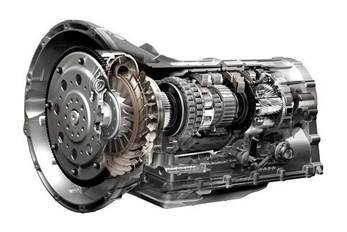
In an automatic transmission, the hydraulically operated control systems are managed electronically by the vehicle’s computer instead of the clutch and gear stick. All the driver has to do is shift the selector from Park (P) or Neutral (N), into Drive (D), and the gear shifting will take place automatically and smoothly, without any additional input from the driver under normal driving conditions.
Gear Selection
Gear selection in automatic transmissions depends on many operational conditions, such as vehicle speed, engine speed, performance mode (where fitted) selected as well as driver assist systems such as traction control, stability control, automatic/autonomous braking and cruise control.
Provided all necessary conditions are met, and there is agreement between the Engine Management and Transmission Control systems, pressurized transmission fluid is automatically channelled to mechanisms that drive sets of planetary gears and clutches, which are roughly analogous to the gear ratios found in this type of transmission.
Rotational energy is provided by a torque converter, a mechanism consisting of two freely rotating parts. One half is attached to the engine and the other to the transmission input shaft. The two halves of the converter are positioned very closely together. The fluid that circulates between them is influenced by the rotational energy of the engine which in turn impacts the transmission side of the converter. Torque is transferred from the engine to the transmission thanks to the shearing strength of fluid.
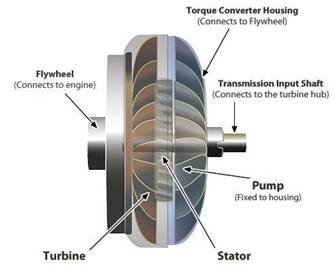
In older automatic transmissions, the shifting action was accomplished by internal fluid pressures overcoming spring tension – closing one circuit before opening another. This control system produced harsh, jerky shifting. Modern systems moderate the action of the controlling valve shuttles, providing almost seamless shifting.
Advantages
• Very easy to use
• Provides a comfortable driving experience
• Modern automatic transmissions match manual transmissions in terms of performance and fuel economy
Disadvantages
• Complex and prone to failures, malfunctions, and unsatisfactory performance due to a variety of possible issues, some of which are unrelated to it itself
• More expensive than a manual transmission to maintain over a vehicle’s lifetime
• Expensive to repair. Replacement is often the more cost effective option
• Unsuitable for use in off-road environments because it cannot provide engine braking
Reading comprehension
1. Аre the statements true or false? Correct the false ones.
1. In an automatic transmission, the hydraulically operated control systems are managed electronically by the vehicle’s computer instead of the clutch and gear stick.
2. Provided all necessary conditions are met, and there isn’t agreement between the Engine Management and Transmission Control systems.
3. One half of rotational energy is attached to the engine and the other to the transmission input shaft.
4. In newer automatic transmissions, the shifting action is accomplished by internal fluid pressures overcoming spring tension – closing one circuit before opening another.
5. Modern automatic transmissions match manual transmissions in terms of performance and fuel economy.
2. Complete the sentences
1. All the driver has to do is shift the selector from Park (P) or Neutral (N), into Drive (D), and …… .
2. The two halves of the converter … .
3. Modern systems moderate the action of the controlling valve shuttles, …. .
4. Modern automatic transmissions match manual transmissions in terms of performance and fuel economy.
5. The fluid that circulates between two halves of the converter is influenced by… .
3. Translate the sentences
1. У автоматичній коробці передач, гідравлічна система управління здійснюється в електронному вигляді з бортовим комп'ютером замість зчеплення і важеля перемикання передач.
2. Крутний момент передається від двигуна на коробку передач завдяки гідромеханічної передачі.
3. Автоматична коробка передач дуже проста у використанні і забезпечує зручний досвід водіння
4. Зважаючи на складність автоматичної коробки передач як агрегату і системи управління, можливо безліч причин впливають на качетство її роботи
5. Обслуговування автоматичної коробки передач дорожче ніж обслуговування механічної.
4. Name the advantages and disadvantages of the fully automatic transmission.
Text C. Semi-Automatic Transmissions
Vocabulary automatic manual – автоматичний/ручний clutchless manual – безмуфтова механічна paddle – плоский гідротехнічний затвір actuator – привод, виконавчий механізм lightning-fast – блискавичний undetectable gearshift – непомітне переключення передачі servos – виконавчі приводи, сервомеханізми, сервосистеми.
time lag – затримка
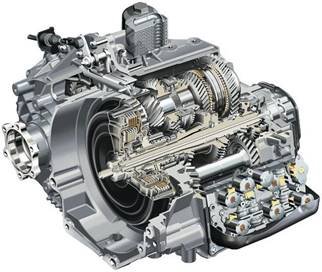
Also known as an “automatic manual” or “clutchless manual” transmission, the simplest way to describe this type is to call it a hybrid between a fully automatic and manual transmission.
Similar to a manual transmission, gears are changed via a simple shifter or paddles located behind the steering wheel. However, there is no need to operate a clutch pedal. Processors, sensors, pneumatics and actuators are all used to “automatically” shift the gears once the drive has signalled the change.
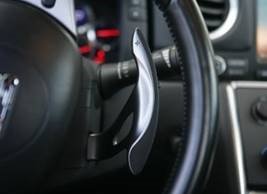
The basic principles of shifting mechanical gears in a semi-automatic fashion have been in use on heavy commercial vehicles for many years. The latest and best designs provide lightning-fast, almost undetectable gearshifts.
The design of these systems varies, but all semi-automatic transmissions rely on microprocessors to control the changing of mechanical gear ratios with the help of electrically operated actuators and servos. Dual clutch systems employ two clutches, one controlling gearshifts in the even numbered gears and, another that controls the odd numbered gears and reverse. This arrangement does not interrupt the power flow from the engine. The driver still has to initiate a gearshift via a shifter or paddles located behind the steering wheel, but there is no need for the driver to operate a clutch.
Advantages
• Smoother shifting/driving experience
• No energy losses due to slippage in torque converters, or during the time lag of manual shifts
Disadvantages
• Complex and prone to failures, malfunctions, and unsatisfactory
performance due to a variety of possible issues, some of which are unrelated to the transmission itself
• More expensive to maintain than a manual transmission
• Very expensive to repair. Replacement is often the more cost effective option
Reading comprehension
1. Are the statements true or false? Correct the false ones.
1. Semi-automatic transmission is similar to a manual transmission, gears are changed via a simple shifter or paddles located behind the steering wheel.
2. There is need to operate a clutch pedal.
3. The basic principles of shifting mechanical gears in a semi-automatic fashion have been in use on heavy commercial vehicles for several years.
4. These transmissions were limited to high-end supercars at first due to their high cost, but an increasing number of manufacturers are fitting them to mid-range cars.
5. The driver doesn’t still have to initiate a gearshift via a shifter or paddles located behind the steering wheel, but there is no need for the driver to operate a clutch.
2. Complete the sentences
1. Processors, sensors, pneumatics and actuators are all used to “automatically” shift the gears ….. .
2. The latest and best designs provide lightning-fast, almost … .
3. All semi-automatic transmissions rely on microprocessors to …. .
4. In semi-automatic transmission no energy losses due to …. .
5. Semi-automatic transmission is complex and prone to failures, malfunctions, and unsatisfactory performance due to ….. .
3. Translate the sentences
1. Напів автоматична коробка передач відома як «автоматична ручна» або «безмуфтова ручна» коробка передач, найпростіший спосіб описати цей тип назвати це гібридом між повністю автоматичною і механічною коробкою передач.
2. Переключення режимів напівавтоматичної коробки передач здійснюються селектором, розташованим на центральному консолі або під кермом.
3. Подвійна системи зчеплення використовуює два види зчеплення (муфти), одна з яких контролюює перемикання парних передач, інша, контролює непарні передачі та задній хід.
4. Напів-автоматична коробка передач більш дорога в обслуговуванні ніж механічна коробка передач.
5. Водій ще повинен використовувати важіль перемикання швидкостей, що розташований за кермом, але немає ніякої необхідності тиснути на зчеплення.
Text D. Continuously Variable Transmissions (CVT) рulley – роликовий блок drive shaft – вал приводу колеса infinite – нескінченне load – навантаження stepless – безступінчатий to eliminate – ліквідувати, усувати
torque-handling ability – здатність обробки крутного моменту
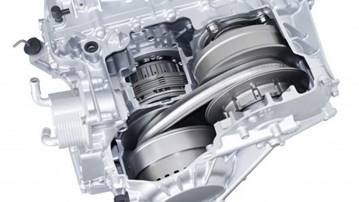
Unlike the others, this transmission doesn’t use gears as its means of producing various vehicle speeds at different engine speeds. Instead of gears, the system relies on a rubber or metal belt running over pulleys that can vary their effective diameters. To keep the belt at its optimum tension, one pulley will increase its effective diameter, while the other decreases its effective diameter by exactly the same amount. This action is exactly analogous to the effect produced when gears of different diameters are engaged.
“Gear” Selection
Since one pulley is driven by the engine and the other is connected to the drive shaft, an infinite number of ratios can be produced. This enables it to always run at the most efficient speed, regardless of the load placed on it. Microprocessorcontrolled sensors quantify load variations and by adjusting both pulleys, the optimum operating speed for the engine can be maintained without any input from the driver.
Advantages
• Constant, stepless acceleration throughout the engine’s optimum operating range
• Provides a comfortable ride by eliminating “shift shock”
• Better fuel efficiency
• Faster response to changing driving conditions such as variations in throttle and engine speed
• Eliminates energy losses associated with torque converters.
•
Disadvantages
• Unsuitable for use in off-road environments because of limited torquehandling ability.
• Cannot provide engine braking
Reading comprehension
1. Are the statements true or false? Correct the false ones.
1. Instead of gears, the CVT relies on a rubber belt running over pulleys that can vary their effective diameters.
2. Continuously Variable transmission doesn’t use gears as its means of producing various vehicle speeds at different engine speeds.
3. The optimum operating speed for the engine can’t be maintained without any input from the driver.
4. The disadvantage of the CVT is constant, stepless acceleration throughout the engine’s optimum operating range.
5. It’s faster response to changing driving conditions such as variations in throttle and engine speed.
2. Complete the sentences.
1. Unlike the others, the CVT doesn’t use gears as ….. .
2. To keep the belt at its optimum tension, one pulley … .
3. Since one pulley is driven by the engine and the other …. .
4.It eliminates energy losses …. . 5.It provides a comfortable ride by …. .
3. Translate the sentences
1. На відміну від інших видів коробок передач (трансмісій), безступіпчата трансмісія (коробка передач) не використовує механізми передач як засіб пришвидшення транспортного засобу на різних обертах двигуна.
2. Для того, щоб підтримувати ремінь приводу у його оптимальній напрузі, один роликовий блок збільшує свій ефективний діаметр, в той час як інший знижує свій ефективний діаметр точно на такий самий об'єм.
3. Перевагою безступінчатої трансмісії є більш швидке реагування на зміну умов руху, такі як зміна дросельної заслінки та оборотів двигуна.
4. Безступінчата трансмісія виключає втрату енергії, пов'язану із гідротранформатором крутячого моменту. (перетворювачем моменту обертання).
5. Безступінчата трансмісія непридатна для використання в умовах бездоріжжя умовах через обмежену здатність обробки крутного моменту.
Text 8. Car Chassis
I. Before you start
What types of transmission do you know? Name advantages and disadvantages of each type.
Vocabulary Text 16 Chassis vehicle frame – рама машини
axle shafts півосі brakes гальма
car springs ресори автомобіля chassis шасі clutch зчеплення crankshaft колінчатий вал driving wheels ведучі колеса final drive головна передача flywheel маховик
fenders крила frame with axles – рама з осями friction device фрикційний пристрій gear шестерня gearbox коробка перемикання швидкостей power transmission силова передача
rear axle задній міст running gear – ходова частина
shaft вал
steering system система рульового керування
tractive effort – тягове зусилля
unit вузол, блок, агрегат
II. Read the text

A chassis consists of an internal vehicle frame that supports a manmade object in its construction and use, can also provide protection for some internal parts.
The main units of the chassis are: the power transmission, the running gear and the steering mechanism. The power transmission includes the whole mechanism between the engine and the rear wheels. This entire mechanism consists of the clutch, gearbox, propeller (cardan) shaft, rear axle, final drive, differential and axle shafts. At the front end of the car is engine. On the back of it is the flywheel. Behind the flywheel is the clutch. The clutch is a friction device connecting the engine with the gear of the gearbox. The main function of the gearbox is to change the speed of the car.
The power is always transmitted by the cardan shaft to the live back axle. The final drive reduces the high speed of the engine to the low speed of the driving wheels. The differential enables the driving wheels to turn at different speed which is necessary when turning the car.
The foundation of the automobile is the frame to which different chassis units are attached. The rear axle is capable of moving up and down about the frame. The rear axle is an important part of the transmission. It carries the greater portion of the weight of the car. The steering mechanism is designed for changing the direction of the car.
The brakes are used for stopping the car, for decreasing its speed and for holding the car position.
III. Reading comprehension 1. Answer the questions
1. What is a chassis?
2. What are the main units of the chassis?
3. What does the power transmission include?
4. What is a clutch? Where is it placed?
5. The foundation of the automobile is the frame to which different chassis units are attached, isn’t it?
6. Why is the rear axle important?
2. Complete the sentences
1. ……, can also provide protection for some internal parts.
2. ……. the whole mechanism between the engine and the rear wheels.
3. …….. to change the speed of the car.
4. ……… the driving wheels to turn at different speed which is necessary when turning the car.
5. ……. the greater portion of the weight of the car.
6. …….. stopping the car, for decreasing its speed and for holding the car position.
3. Translate the sentences
1.Cилова передача включає в себе зчеплення, коробку перемикання швидкостей, карданний вал, задній міст, головну передачу, напівосі.
2. Зчеплення – це фрикційний пристрій, що поєднує двигун з коробкою перемикання швидкостей.
3. Головна передача знижує високі оберти двигуна на низьких оборотів ведучих колес.
4.Диференціал дозволяє ведучим колесам обертатися з різною швидкістю при повороті автомобіля.
5. Задній міст – важлива частина трансміссії.
6. Гальма використовують для зупинки або зниження швидкості автомобіля.
Text 9. What Is a Car Safety
I. Before you start
What is а chassis? How does it work?
Vocabulary kinetic energy енегрія руху, жива сила safety features – засоби безпеки, захистні характеристики collision – аварія, зіткнення seat belt – пасок безпеки air bags – подушки безпеки сrumple zones – зони зминання
to deform – деформуватися, спотворювати форму acceleration – пришвидшення
force – сила, вплив
antilock braking system антиблокувальна гальмівна система;
антиблокувальна система гальм; комп'ютеризована система, що перешкоджає блокуванню і ковзанню коліс при екстреному гальмуванні traction control – антипробуксовочна система, контроль тяги safety cage – каркас безпеки, захисний каркас авто
roll-over accident – нещасний випадок при якому автомобіль декілька разів
перегортається distraction – відволікання
accidental speeding – випадкове перевищення швидкості paddle shift control – пелюскове перемикання передач (швидкостей) adjudtable seats – регульовані сидіння
II. Read the text
Moving cars have kinetic energy. As energy cannot be created or destroyed, when a car brakes its kinetic energy changes into heat energy. The brakes heat up and then transfer the energy to the surroundings. Modern cars also have safety features that absorb kinetic energy in collisions. These typically include:
• seat belts
• air bags
• crumple zones
All these features reduce injuries to the people in the car by absorbing energy when they change shape.

Car crash simulation
As they deform they increase the amount of time the person takes to come to a stop. This reduces the acceleration and force on the person, so reducing injury.
Seat belts have to be replaced after a crash because the large forces may damage them.
Other safety features
These are designed to help you survive a crash with as little injury as possible, or avoid a crash altogether. They include:
• Anti-lock braking system (ABS) – prevents skidding allowing the driver to remain in control. The vehicle stops more quickly as there's more friction between the road and tyres.
• Traction control prevents skidding while accelerating so the car can quickly escape a dangerous situation.
• Safety cage – strengthens the cabin section to protect people in a roll-over accident.
There are other features designed to help prevent accidents by reducing distractions while driving. They include:
• Electric windows – make it easier to open and close windows
• Cruise control – helps reduce accidental speeding
• Paddle shift controls – allows the driver to keep both hands on the steering wheel while changing gear or radio stations
• Adjustable seats – makes the driver more comfortable
III. Reading comprehension 1. Answer the questions
1. What happens to kinetic energy when a car brakes?
2. What safety features does modern cars have?
3. What is the function of these features?
4. Why do seat belts have to be replaced after a crash?
5. What is the function of ABS?
6. Name the other features designed to help prevent accidents.
2. Complete the sentences
1. ……….and then transfer the energy to the surroundings.
2. ………. safety features that absorb kinetic energy in collisions.
3. ……….they increase the amount of time the person takes to come to a stop.
4. …….. prevents skidding allowing the driver to remain in control.
5. ……. strengthens the cabin section to protect people in a roll-over accident.
6. ……. allows the driver to keep both hands on the steering wheel while changing gear or radio stations.
3. Translate the sentences
1. Засоби безпеки автомобіля включають в себе: паски безпеки, подушки безпеки, зони зминання автомобіля.
2. При екстреному гальмуванні , авто дуже швидко зупиняється та здійснюється тертя між дорогою та шинами.
3. Захисний каркас авто захищає пасажирів при нещасному випадку коли автомобіль декілька разів перегортається.
4. Круїз контроль допомагає знизити випадкове перевищення швидкості.
5. Пелюсткове перемикання швидкостей допомагає водію тримати обидві руки на кермі під час зміни передачі. 6. Регульовані сидіння роблять керування авто комфортним.
Text 10. Automative Electronics
I. Before you start
What safety features does modern cars have?
Vocabulary
carputer – машинний комп'ютер telematics – телематика, комп'ютерізований дистанційний зв'язок іn-car entertainment systems вбудована мультимедійна система engine control unit – блок керування двигуном acronym – абревіатура
engine control module – модуль керування двигуном transmission control module – блок керування коробкою передач commercial vehicle – вантажний автотранспорт automotive embedded system – вбудована система автомобілю engine electronics – електроника двигуна transmission electronics – електороніка трансмісії chassis electronics – електроніка шассі active safety – активна безпека driver assistance – cистема допомоги водію passenger comfort – комфорт пассажиру entertainment systems – мультимедійна система fuel injection rate – швидкість вприскування палива
еmission control – конроль викиднів NOx control котроль оксиду азоту
regeneration of oxidation catalytic converter відновлення окислення
каталітичного нейтралізатора turbocharger control регулювання тиску наддуву throttle control – дроссельне регулювання, механізм керування
дроссельною заслонкою lambda control – лямбда-контроль
on-board diagnostics – бортова діагностика, вбудована діагностика lubrication system control – контроль системи змащення actuators – датчики, приводи throttle valve – дросельна заслінка
EGR valve клапан рециркуляції відпрацьованих газів; клапан системи рециркуляції відпрацьованих газів rack (in VGTs) Variable-geometry turbochargers – індикатор (у змінному
турбокомпресорі) pulse-width modulated signal широтно-імпульсна модуляція сигналів torque interrupt – переривання крутного моменту declutching – вимикання зчеплення anti-lock Braking System – антиблокувальна система гальм
Traction Control System система регулювання тягового зусилля; регулювання тягового зусилля; протибуксовочна система; комп'ютеризована система регулювання сили тяги коліс electronic brake distribution система розподілу гальмівних зусиль electronic stability program електронна система динамічної стабілізації ;
електронна система курсової стійкості collision – зіткнення
hill descent control контрольований спуск з гори система контролю тяги
для спуску з крутих і слизьких ухилів; система автоматичного контролю стійкості на спуску; система керованого спуску emergency brake assist system – система допомоги при аварійному
гальмуванні, система контролю екстеного гальмування lane assist system – електронна система, що здійснює контроль руху
автомобіля за полосою speed assist system – система допомоги при швидкості
blind spot detection виявлення об'єктів поза зоною видимості водія (в
автомобільній радіолокації) park assist system – система допомоги паркування
adaptive cruise control system – система адаптивного круїз-контролю seat adjustment – регулювання сидіння automatic wipers – автоматичні склоочісники automatic headlamps – автоматичні фари
infotainment systems – інформаційно-розважальні системи
software development – розробка программного забезпечення applicable product liability requirements – вимоги до відповідальності за
якість продукції cancellation or recall скасування, анолювання
International Electrotechnical Commission – міжнародна електротехнічна комісія
International Organization for Standardization – міжнародна організація з стандартизації
Final Draft International Standard Остаточний проект міжнародного стандарту
II. Read the text
Automotive electronics are any electrically-generated systems used in road vehicles, such as: carputers, telematics, in-car entertainment systems, etc..
Automotive electronics originated from the need to control engines. The first electronic pieces were used to control engine functions and were referred to as engine control units(ECU). As electronic controls began to be used for more automotive applications, the acronym ECU took on the more general meaning of
"electronic control unit", and then specific ECU's were developed. Now, ECU's are modular. Two types include engine control modules (ECM) or transmission control modules (TCM).
A modern car may have up to 100 ECU's and a commercial vehicle up to 40. Automotive electronics or automotive embedded systems are distributed systems, and according to different domains in the automotive field, they can be classified into: engine electronics, transmission electronics, chassis electronics, active safety, driver assistance, passenger comfort, entertainment systems
Engine electronics.One of the most demanding electronic parts of an automobile is the engine control unit. Engine controls demand one of the highest real time deadlines, as the engine itself is a very fast and complex part of the automobile. Of all the electronics in any car the computing power of the engine control unit is the highest, typically a 32-bit processor.
It controls such things as:
In a diesel engine: fuel injection rate, emission control, NOx control, regeneration of oxidation catalytic converter, turbochargercontrol, cooling system control, throttle control
In a gasoline engine: lambda control, OBD (On-Board Diagnostics), cooling system control, ignition system control, lubricationsystem control (only a few have electronic control), fuel injection rate control, throttle control
Many more engine parameters are actively monitored and controlled in realtime. There are about 20 to 50 that measure pressure, temperature, flow, engine speed, oxygen level and NOx level plus other parameters at different points within the engine. All these sensor signals are sent to the ECU, which has the logic circuits to do the actual controlling. The ECU output is connected to different actuators for the throttle valve, EGR valve, rack (in VGTs), fuel injector (using a pulse-width modulatedsignal), dosing injector and more. There are about 20 to 30 actuators in all.
Transmission electronics.These control the transmission system, mainly the shifting of the gears for better shift comfort and to lower torque interrupt while shifting. Automatic transmissionsuse controls for their operation, and also many semi-automatic transmissions having a fully automatic clutch or a semi-auto clutch (declutching only). The engine control unit and the transmission control exchange messages, sensor signals and control signals for their operation.
Chassis electronics. The chassis system has lot of sub-systems which monitor various parameters and are actively controlled: ABS Anti-lock Braking System,TCS – Traction Control System, EBD – Electronic Brake Distribution, ESP – Electronic Stability Program
![]()
These systems are always ready to act when there is a collision in progress or to prevent it when it senses a dangerous situation: air bags, hill descent control, emergency brake assist system.
Driver assistance: lane assist system, speed assist system ,blind spot detection, park assist system, adaptive cruise control system.
Passenger comfort: automatic climate control, electronic seat adjustment with memory, automatic wipers, automatic headlamps adjusts beam automatically, automatic cooling - temperature adjustment.
Infotainment systems: navigation system, vehicle audio.
Information access. All of the above systems forms an infotainment system.
Developmental methods for these systems vary according to each manufacturer. Different tools are used for both hardware and softwaredevelopment.
Functional safety requirements. In order to minimize the risk of dangerous failures, safety related electronic systems have to be developed following the applicable product liability requirements. Disregard for, or inadequate application of these standards can lead to not only personal injuries, but also severe legal and economic consequences such as product cancellations or recalls.
The IEC 61508 standard, generally applicable to electrical/electronic/programmable safety-related products, is only partially adequate for automotive-development requirements. Consequently, for the automotive industry, this standard is replaced by the existing ISO 26262, currently released as a Final Draft International Standard (FDIS). ISO/DIS 26262 describes the entire product life-cycle of safety related electrical/electronic systems for road vehicles. It has been published as an international standard in its final version in November 2011. The implementation of this new standard will result in modifications and various innovations in the automobile electronics development process, as it covers the complete product life-cycle from the concept phase until its decommissioning.
III. Reading comprehension.
1. Are the statements true or false? Correct the false ones
1. Automotive electronics originated from the need to control engines.
2. A modern car may have up to 200 ECU's and a commercial vehicle up to 60.
3. Of all the electronics in any car the computing power of the engine control unit is the highest, typically a 30-bit processor.
4. Many more engine parameters are actively monitored and controlled in realtime.
5. The engine control unit and the transmission control exchange messages, sensor signals and control signals for their operation.
6. The chassis system has few sub-systems which monitor various parameters and are actively controlled.
2. Complete the sentences
1. The first electronic pieces were used to control engine functions and were referred to as ….. . 2. Two types include engine control modules ….
3. One of the most demanding electronic parts of an automobile is …..
4. In a gasoline engine the engine control unit controls: …..
5. The ECU output is connected to different actuators for the throttle valve,… . 6. Driver assistance includes: … .
3. Translate the sentences
1. Автомобільна електроніка – будь-яка електрично згенерована система, що використовуються в дорожніх транспортних засобах, таких як: машинні комп'ютери, телематика, та вбудована розважальна система.
2. Автомобільну електроніку можна класифікувати на: електроніку двигуна, електроніку трансмісії, електроніку шасі, активну безпека, допомогу водію, комфорт пасажирів, мультимедійну систему.
3.Блок керування двигуном у дизельних двигунах відповідає за: швидкість уприскування палива, контроль викидів, контролю окису азоту, відновлення окислення каталітичного нейтралізатора, регулювання тиску наддуву, контроль системи охолодження, дроссельне регулювання.
4. Автоматичні коробки передач за допомогою елементів керування їх роботи, а також безліч напівавтоматичні коробки передач, що мають повністю автоматичне зчепленням або напівавтоматичний зчеплення (тільки) вимикання зчеплення.
5. Ця системи завжди готова діяти, коли відбувається зіткнення або, щоб йому запобігти, та коли вона виявляє небезпечну ситуацію.
![]()
6. Система допомоги водію включає в себе: електронну систему, яка здійснює контроль руху автомобіля за полосою, систему допомоги при швидкості, виявлення об'єктів поза зоною видимості водія (в автомобільній радіолокації), систему допомоги при паркуванні, систему адаптивного круїзконтролю.
4. Name the parts of passanger comfort and infotainment systems.
5.What do you know about: The IEC 61508 standard?
![]()
PART IV. TRAFFIC SIGNS
Text 1. The History of the Traffic Signs
I. Before you start
What traffic signs do you know?
Vocabulary
erected зведений
milestone верствовий стовп multidirectional різноспрямований intersection перетин,перехрестя scale шкала considerable значний hazard небезпека steep hills круті пагорби signage system система вивісок devise розробити bump ухаб curve крива
grade-level railroad crossing ж\д перетин smelting виплавка coke кокс cast iron чавун
vitreous enameled склоподібно емальований pressed malleable iron пресований ковковий чавун adhesive plastic coatingпластикове покриття remote manual input дистанційне ручнее введення cellular сотовий
RFID(radio frequency identification) радіочастотні ідентифікації handicapped інвалід transmitter передавач hand-held receiver ручний приймач
II. Read the text
Traffic signs or road signs are signs erected at the side of or above roads to give instructions or provide information to road users.
The earliest road signs were milestones, giving distance or direction; for example, the Romans erected stone columns throughout their empire giving the distance to Rome. In the Middle Ages, multidirectional signs at intersections became common, giving directions to cities and towns.
The first modern road signs erected on a wide scale were designed for riders of high or "ordinary" bicycles in the late 1870s and early 1880s. These machines were fast, silent and their nature made them difficult to control, moreover their riders travelled considerable distances and often preferred to tour on unfamiliar roads. For such riders, cycling organizations began to erect signs that warned of potential hazards ahead (particularly steep hills), rather than merely giving distance or directions to places, thereby contributing the sign type that defines "modern" traffic signs.
The development of automobiles encouraged more complex signage systems using more than just text-based notices. One of the first modern-day road sign systems was devised by the Italian Touring Club in 1895. By 1900, a Congress of the International League of Touring Organizations in Paris was considering proposals for standardization of road signage. In 1903 the British government introduced four "national" signs based on shape, but the basic patterns of most traffic signs were set at the 1908 International Road Congress in Rome. In 1909, nine European governments agreed on the use of four pictorial symbols, indicating "bump", "curve", "intersection", and "grade-level railroad crossing". The intensive work on international road signs that took place between 1926 and 1949 eventually led to the development of the European road sign system. Both Britain and the United States developed their own road signage systems, both of which were adopted or modified by many other nations in their respective spheres of influence.
The UK adopted a version of the European road signs in 1964 and, over past decades, North American signage began using some symbols and graphics mixed in with English.
Over the years, change was gradual. Pre-industrial signs were stone or wood, but with the development of Darby's method of smelting iron using coke, painted cast iron became favoured in the late 18th and 19th centuries. Cast iron continued to be used until the mid-20th century, but it was gradually displaced by aluminium or other materials and processes, such as vitreous enamelled and/or pressed malleable iron, or (later) steel. Since 1945 most signs have been made from sheet aluminium with adhesive plastic coatings, these are normally retroreflective for nighttime and low-light visibility. Before the development of reflective plastics, reflectivity was provided by glass reflectors set into the lettering and symbols.
New generations of traffic signs based on electronic displays can also change their text (or, in some countries, symbols) to provide for "intelligent control" linked to automated traffic sensors or remote manual input. In over 20 countries, real-time Traffic Message Channel incident warnings are conveyed directly to vehicle navigation systems using inaudible signals carried via FM radio, 3G cellular data and satellite broadcasts. Finally, cars can pay tolls and trucks pass safety screening checks using video numberplate scanning, or RFID transponders in windshields linked to antennae over the road, in support on-board signalling, toll collection and travel time monitoring.
Yet another "medium" for transferring information ordinarily associated with visible signs is RIAS (Remote Infrared Audible Signage), e.g., "talking signs" for print-handicapped (including blind/low-vision/illiterate) people. These are infrared transmitters serving the same purpose as the usual graphic signs when received by an appropriate device such as a hand-held receiver or one built into a cell phone.
III. Reading comprehension
1. Are the statements true or false?
1.Traffic signs or road signs are signs erected at the side of or above roads to give instructions or provide information to road users.
2.The first modern road signs erected on a wide scale were designed for riders of high or "ordinary" bicycles in the late 1770s and early 1780s.
3.The development of automobiles encouraged more complex signage systems using more than just text-based notices.
4.One of the first modern-day road sign systems was devised by the Italian Touring Club in 1896.
5.New generations of traffic signs based on electronic displays can also change their text (or, in some countries, symbols) to provide for "intelligent control".
2. Write down your own questions to the text
3. Translate the sentences
1. Дорожні знаки це знаки, встановлені на узбіччі або над дорогами та дають вказівки або інформацію для учасників дорожнього руху.
2. У середні віки, різноспрямовані знаки на перехрестях стали звичайною справою, даючи напрямки до міст.
3. Однією з перших сучасних систем дорожніх знаків була розроблений італійською туристичним клубу в 1895 році.
4. У 1909 році дев'ять європейських країн домовилися про використання чотирьох образотворчих символів: «ухаб», «крива», «перехрестя», і «залізничний перетин».
5. Англія та Сполучені Штати розробили свою власну систему дорожніх знаків, обидві з яких були прийняті або змінені багатьма іншими країнами.
Text 2. Сatagories of Traffic Signs
I. Before you start
Remember the catagories of signs in your contry
Vocabulary
danger warning signs попереджувальні знаки priority signs пріоритетні ознаки
prohibitory or restrictive signs знаки заборони
special regulation signs знаки спеціального регулювання
інформаційні або сервісні знаки direction, position, or indication signs вказівні знаки additional panels додаткові панелі route marker signs маршрутні знаки expressway signs знаки швидкості freeway signs знаки автостради
welcome signs знаки Ласкаво просимо
II. Read the text
Traffic signs can be grouped into several types. For example, Annexe 1 of the Vienna Convention on Road Signs and Signals (1968), which on 30 June 2004 had 52 signatory countries, defines eight categories of signs:
• Danger warning signs
• Prohibitory or restrictive signs
• Information, facilities, or service signs
• Direction, position, or indication signs
• Additional panels
In the United States, Canada and Australia signs are categorized as follows:
• Guide signs
• Expressway signs
• Freeway signs
• Welcome Signs
• Informational signs
• Recreation and cultural interest signs
• Emergency management (civil defense) signs
• Temporary traffic control (construction or work zone) signs
• School signs
• Railroad and light rail signs
• Bicycle signs
In the United States, the categories, placement, and graphic standards for traffic signs and pavement markings are legally defined in the Federal Highway Administration's Manual on Uniform Traffic Control Devices as the standard.
A rather informal distinction among the directional signs is the one between advance directional signs, interchange directional signs, and reassurance signs. Advance directional signs appear at a certain distance from the interchange, giving information for each directionAdvance directional signs enable drivers to take precautions for the exit (e.g., switch lanes, double check whether this is the correct exit, slow down). They often do not appear on lesser roads, but are normally posted on expressways and motorways, as drivers would be missing exits without them.
While each nation has its own system, the first approach sign for a motorway exit is mostly placed at least 1000 m from the actual interchange. After that sign, one or two additional advance directional signs typically follow before the actual interchange itself.
III. Reading comprehension
1.Name the catagories of the road signs
2. Finish the sentences
1.Traffic signs can be grouped into________________________.2. In the United States, the categories, placement, and graphic standards for traffic signs and pavement markings are legally defined in the Federal Highway
Administration's __________________________________.3. Advance directional
signs appear at a certain distance from the interchange,
___________________________.4. They often do not appear on lesser roads__________________________. 5. While each nation has its own system,
the first approach sign for a motorway exit is mostly placed ______________________________________.
3.Translate the sentences
1.Дорожні знаки можуть бути згруповані у кілька видів.
2. Віденська конвенція про дорожні знаки та сигнали, визначає вісім категорій знаків: попереджувальні знаки, пріоритетні ознаки, знаки заборони, розпорядчі знаки, знаки спеціального регулювання, інформаційні сервісні знаки, вказівні знаки, додаткові панелі.
3. У Сполучених Штатах, категорії, розміщення і графічні стандарти для дорожніх знаків та маркувань тротуару юридично визначені у статуті про єдність засобів регулювання дорожнього руху.
4. Вказівні знаки з'являються на певній відстані від транспортної розв'язки, даючи інформацію для кожного напрямку.
5. Ряд країн не надає інформацію про дороги заздалегідь, а тільки напрям
«вліво» і «вправо».
Text 3. Traffic Signs in Europe
I. Before you start
What is a traffic sign? When was the first road sign erected?
Vocabulary
treaty договір
triangular shapes треугольник
background фон diamond shape форма діаманта(п’ятиугільник ) prohibition signs знаки заборони secondary signs вторинні знаки rectangular shape прямокутна форма moose лось directional signs знаки напряму non-motorways не-австостади signposting установка дорожних знаків
II. Read the text
In 1968, the European countries signed the Vienna Convention on Road Traffic treaty, with the aim of standardizing traffic regulations in participating countries in order to facilitate international road traffic and to increase road safety. Part of the treaty was the Vienna Convention on Road Signs and Signals, which defined the traffic signs and signals. As a result, in Western Europe the traffic signs are well standardized, although there are still some country-specific exceptions, mostly dating from the pre-1968 era.
The principle of the European traffic sign standard is that shapes and colours are to be used for indicating identical purposes.
• Triangular shapes (white or yellow background) are used in warning signs. Additionally, the Vienna convention allows an alternative shape for warning signs, a diamond shape, which is rarely used in Europe ( Ireland).
• The prohibition signs in Europe are round with a red border.
• Informative and various other secondary signs are of rectangular shape.
• Animals shown on warning signs include moose, frogs, deer, ducks, cows, sheep, horses, polar bears (on Svalbard), and monkeys (in Gibraltar). The Convention allows any animal image to be used.
Directional signs have not been harmonized under the Convention, at least not on ordinary roads. As a result, there are substantial differences in directional signage throughout Europe. Differences apply in typeface, type of arrows and, most notably, colour scheme. The convention however specifies a difference between motorways and ordinary roads. Motorways use white-on-green (e.g., Italy, Switzerland, Denmark, Sweden, Finland, Slovenia, Croatia, Czech Republic, Greece, Cyprus, Bulgaria, Romania, Slovakia, Serbia, Turkey, Republic of Macedonia, Albania) or white-on-blue (e.g., Norway, Germany, the Republic of Ireland, France, United Kingdom, Spain, Netherlands, Belgium, Austria, Luxembourg, Poland, Portugal, Latvia). Hungary switched from white-on-green to white-on-blue in the early 2000s during the reconstruction of existing and construction of new motorways.
Differences are greater for non-motorways:
• White-on-blue in Italy, Switzerland, Sweden, Czech Republic, Greece, Cyprus, Slovakia, Bulgaria, Romania, Latvia, Estonia, Finland Turkey and Netherlands (in this case the same as motorways).
• White-on-green in United Kingdom, Republic of Ireland, Poland, France and Portugal (only in the few primary roads that still have not been transformed in motorways),
• Black-on-yellow in Germany, Luxembourg, Norway, Slovenia, Serbia and Croatia.
• Red-on-white in Denmark (though white-on-blue on motorway exits and all overhead gantries)
Secondary roads are different from primary roads in France, United Kingdom, Finland, Republic of Ireland, Switzerland and Portugal, always signposted in black-on-white. In Germany, Italy, Romania and Sweden, black-on-white indicates only urban roads or urban destinations. Signposting road numbers differs greatly as well. Only the European route number, if signposted, will always be placed in white letters on a green rectangle. European route numbers are not signed at all in the United Kingdom.
Some signs like "STOP", "ZONE" etc. are recommended to be in English, but the local language is also permitted. If the language uses non-Latin characters, the names of cities and places should also be in Latin transcription. Road signs in the Republic of Ireland are bilingual, using Irish and English. Wales is also the same, with bilingual Welsh–English signs; some parts of Scotland also have bilingual Scottish Gaelic–English signs. Finland also uses bilingual signs, in Finnish and Swedish. Signs in Belgium are in French, Dutch and German depending on the region. In the Brussels Capital Region, road signs are in French and Dutch. Signs in Germany and Austria are in German. Signs in Luxembourg are in French and
German. Signs in Switzerland are in French, German, and Italian.
European countries use the metric system on road signs (distances in kilometres or metres, heights/widths in metres) with the notable exception of the UK, where distances are indicated in miles, and on remaining finger post signs in the Republic of Ireland erected before 1977, where distances are also indicated in miles (which were formally used for all directional signage in the Republic of Ireland prior to 1977 and on speed limits prior to 2005). For countries driving on the left, the convention stipulates that the traffic signs should be mirror images of those used in countries driving on the right. This practice, however, is not systematically followed in the four European countries driving on the left, Cyprus, the Republic of Ireland, Malta and the United Kingdom. The convention permits the use of two background colours for danger and prohibit signs, white or yellow. Most countries use white with a few exceptions like Sweden, Finland, Iceland and Poland, as yellow tends to be more visible in areas in which snow is prevalent. Some countries such as France use white for normal usage and yellow for temporary signs.
The European traffic signs have been designed with the principles of heraldry in mind; i.e., the sign must be clear and able to be resolved at a glance. Most traffic signs conform to heraldic tincture rules, and rather use symbols than written texts for better semiotic clarity.
III. Reading comprehension 1. Answer the questions
1. When did the countries sign the the Vienna Convention on Road Traffic treaty?
2. What was the aim of it?
3. What is the principle of European sign standard?
4. Directional signs aren’t harmonized under the Convention, are they?
5. What signs are recommended to be in English?
2.Choose any two countries and compare the traffic signs
3. Translate the sentences
1.У 1968 році європейські країни підписали Віденську конвенцію про дорожній рух.
2. Частина договору була Віденська конвенція про дорожні Знаки та Сигнали, які визначені дорожні знаки і сигнали.
3. Принцип європейського стандарту дорожніх знаків у тому, що форми та кольори повинні використовуватися для позначення ідентичних цілей. 4.Автомагістралі використовують білі літери на зеленому фоні (наприклад,
Італія, Швейцарія, Данія, Швеція, Фінляндія, Словенія, Хорватія, Чеська
Республіка, Греція, Кіпр, Болгарія, Румунія, Словаччина, Сербія, Туреччина, Республіка Македонія, Албанія), або білі на синьому (наприклад, Норвегія, Німеччина, Ірландія, Франція, Великобританія, Іспанія, Нідерланди, Бельгія, Австрія, Люксембург, Польща, Португалія, Латвія).
5. Європейські дорожні знаки були розроблені за принципом,щоб їх можна було впізнати з першого разу.
Список використаних джерел
1. Англо-русский политехнический словарь /[под ред. А. Е. Чернухина]. – 4-е изд. стереотип., с Дополнениями. – М.: Русский язык, 1979. – 688 с.
2. Загальноєвропейські Рекомендації з мовної освіти: вивчення, викладання, оцінювання / [наук. ред. укр. вид. доктор пед. наук, проф. С. Ю. Ніколаєва]. К.: Ленвіт, 2003. 273 с.
3. Шепель М. Є. Методичні для роботи з фаховими текстами для студентів ІІІ курсу спеціальності 5.07010101: «Організація дорожнього руху»/ М. Є. Шепель. Одеса: ОАДК ОНПУ, 2015. – 59 с.
4. An Encyclopedia of Automotive Emblems – [Електроний ресурс] – режим доступу: http://gearpatrol.com/2015/03/31/automotive-emblemsexplained/
5. Auto mechanic – [Електроний ресурс] – режим доступу: https://en.wikipedia.org/wiki/Auto_mechanic
6. Automobile Design Careers. Becoming an Automotive Designer –
[Електроний ресурс] – режим доступу:
http://www.theartcareerproject.com/automobile-design-career/584/
7. Auto Service Tips for Your Car’s Cooling System // Motorist – [Електроний ресурс] – режим доступу: http://motorist.org/articles/coolingsystem-maintenance
8. Auto Brake Service and Braking System explanations// Моtorist –
[Електроний ресурс] – режим доступу: http://motorist.org/articles/auto-brakingsystems
9. Automotive electronics – [Електроний ресурс] – режим доступу: https://en.wikipedia.org/wiki/Automotive_electronics
10. BBC GCSE Bitesize Car Safety Features – [Електроний ресурс] – режим доступу:
http://www.bbc.co.uk/schools/gcsebitesize/science/add_gateway_pre_2011/forces/ crumplezonesrev1.shtml
11. Bozzella J. The Future of the Automoble Industry/ J. Bozella // Global
Automakers. 21 March 2016. – [Електроний ресурс] – режим доступу: https://www.globalautomakers.org/media/blog/the-future-of-the-auto-industry
12. 12 Car Maintenance Mistakes– [Електроний ресурс] – режим доступу: https://www.pepboys.com/car_care_corner/car_care_basics/maintenance/common
_maintenance_mistakes/
13. Car parts vocabulary list learn the English words for car parts using
pictures– [Електроний ресурс] – режим доступу: https://www.easypacelearning.com/all-lessons/english-level-2/1299-car-partsvocabulary-list-learn-the-english-words-for-car-parts-using-pictures
14. Cheap v Reliable: Top Factors in New Car Choice // The Telegraph. 18
Feb. 2017–[Електроний ресурс] – режим доступу:
http://www.telegraph.co.uk/sponsored/finance/hitachi/11130993/factors-new-carchoice.html
15. Dahl T. 16 Tools to Get You Started Working on Your Own Car/ T. Dahl–
[Електроний ресурс] – режим доступу:
http://www.popularmechanics.com/cars/how-to/g2657/tools-to-get-you-startedworking-on-your-own-car/
16. ESL Reading Lessons: Electric Cars – [Електроний ресурс] – режим доступу: http://eslreadinglessons.com/electric_cars.htm
17. How the Ignition System Works // How a Car Works – [Електроний ресурс] – режим доступу: https://www.howacarworks.com/basics/how-theignition-system-works
18. Porter A. How to Sell a Car/ A. Porter – [Електроний ресурс] – режим доступу: http://www.which.co.uk/reviews/cars/article/how-to-sell-a-car
19. Service (motor vehicle) – [Електроний ресурс] – режим доступу: https://en.wikipedia.org/wiki/Service_(motor_vehicle)
20. Types of Transmissions and How They Work – [Електроний ресурс] – режим доступу: http://www.transmissionrepaircostguide.com/types-oftransmissions/
21. The Engine. How a Car Works – [Електроний ресурс] – режим доступу: https://www.howacarworks.com/basics/the-engine
Навчальне видання
ПРАКТИКУМ ДЛЯ РОЗВИТКУ НАВИЧОК ЧИТАННЯ З АНГЛІЙСЬКОЇ МОВИ ДЛЯ ФАХІВЦІВ АВТОМОБІЛЬНОЇ ТА МАШИНОБУДІВНОЇ ГАЛУЗІ
Укладач
ШЕПЕЛЬ Марина Євгенівна
Підп. до друку 04.05.2017. Формат 60х90/16. Папір офсетний.
Гарн. «Times» Друк цифровий. Ум. друк. арк. 7,06.
Наклад 100 пр.
Видавець Букаєв Вадим Вікторович вул. Пантелеймонівська 34, м. Одеса, 65012.
Свідоцтво суб’єкта видавничої справи ДК № 2783 від 02.03.2007 р. Тел. 0949464393, 0487431393 email - 7431393@gmail.com


про публікацію авторської розробки
Додати розробку
